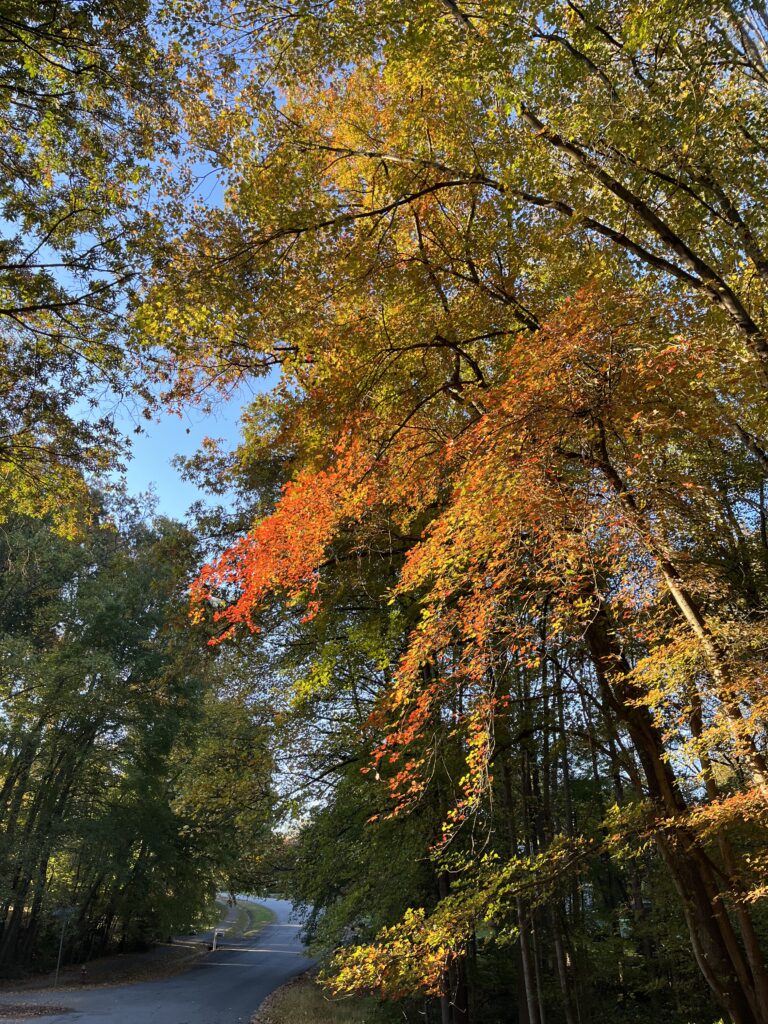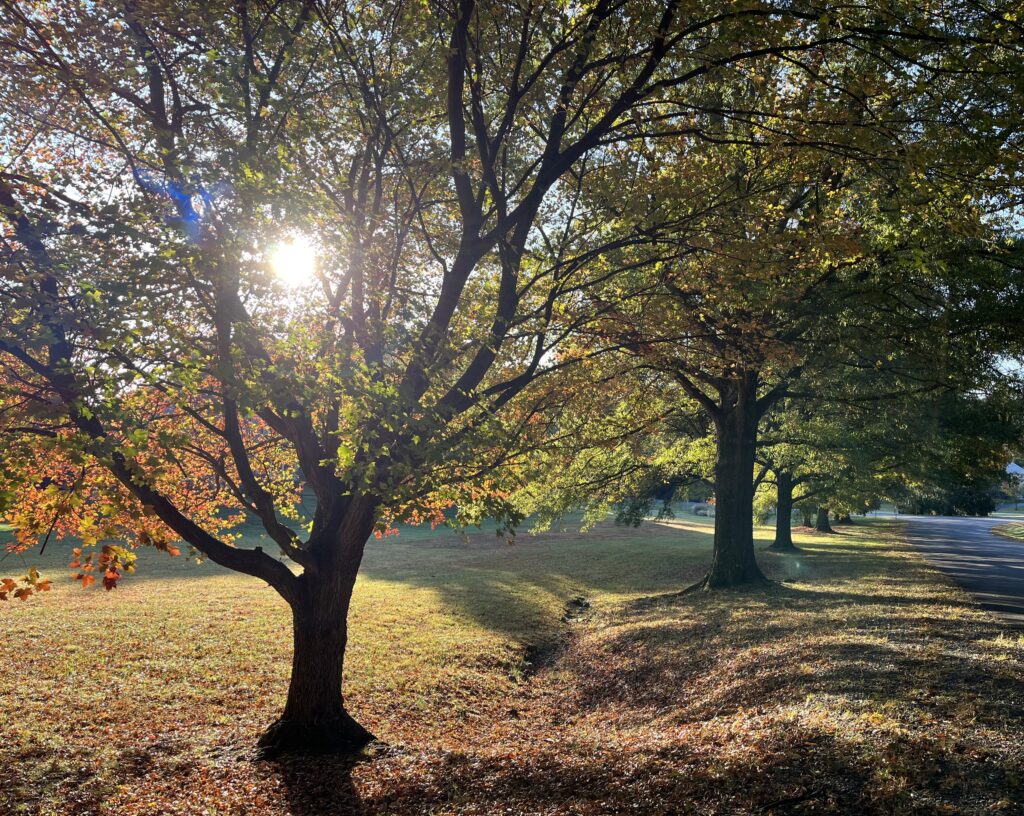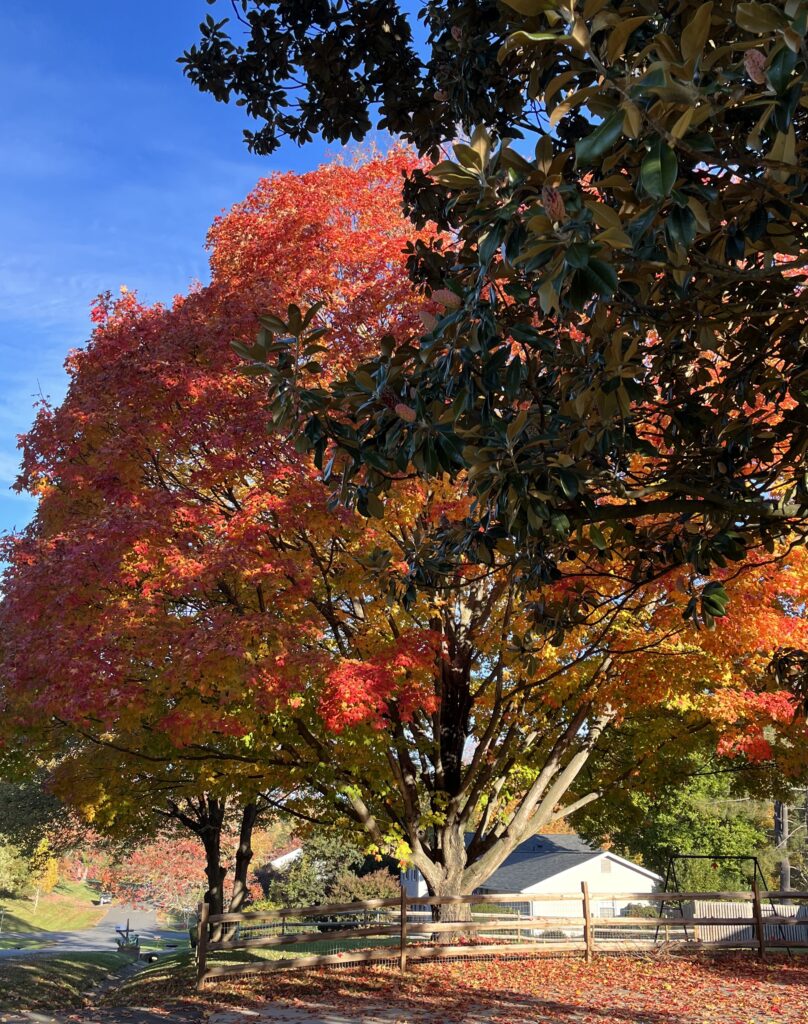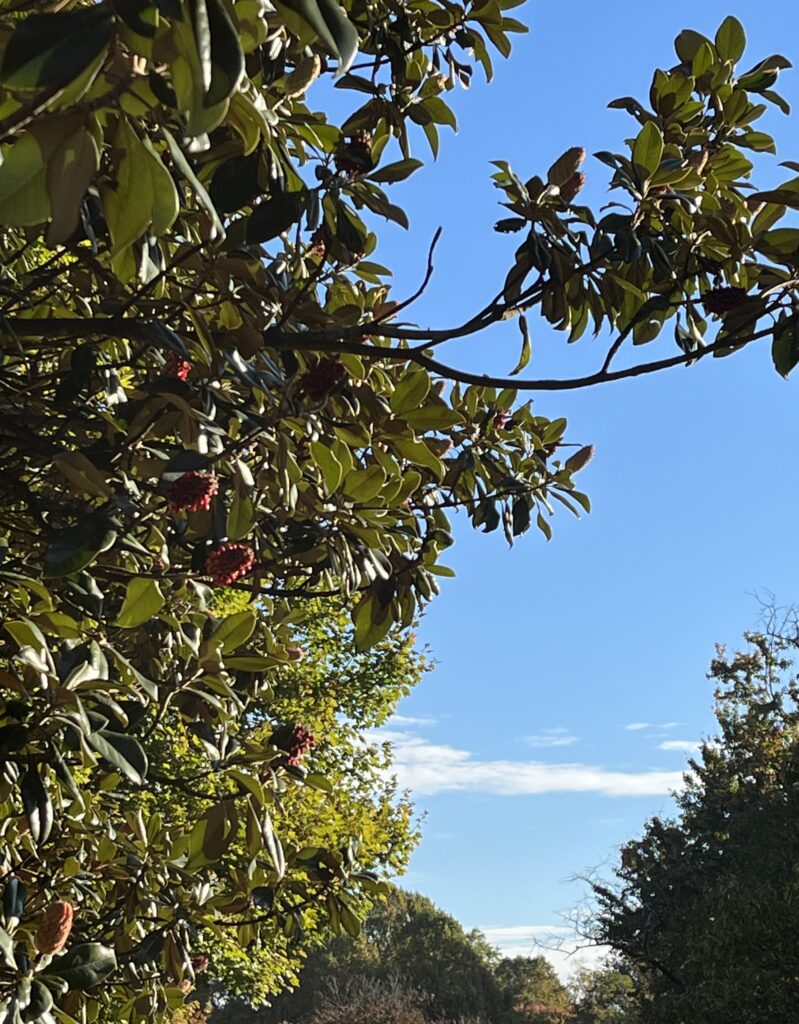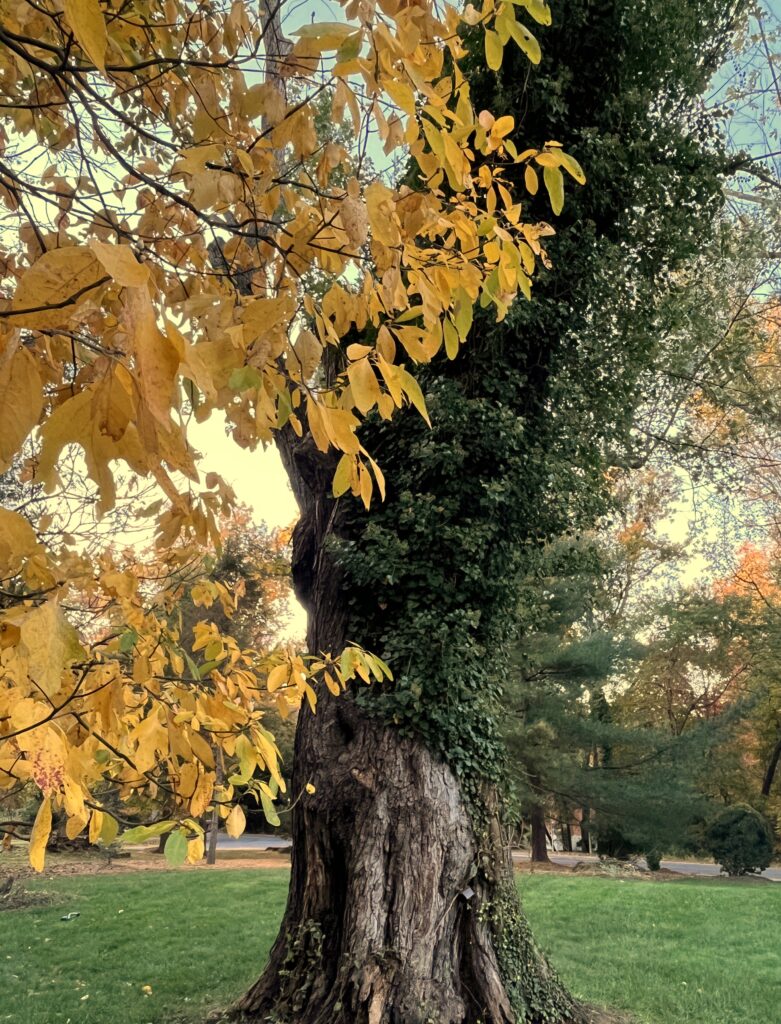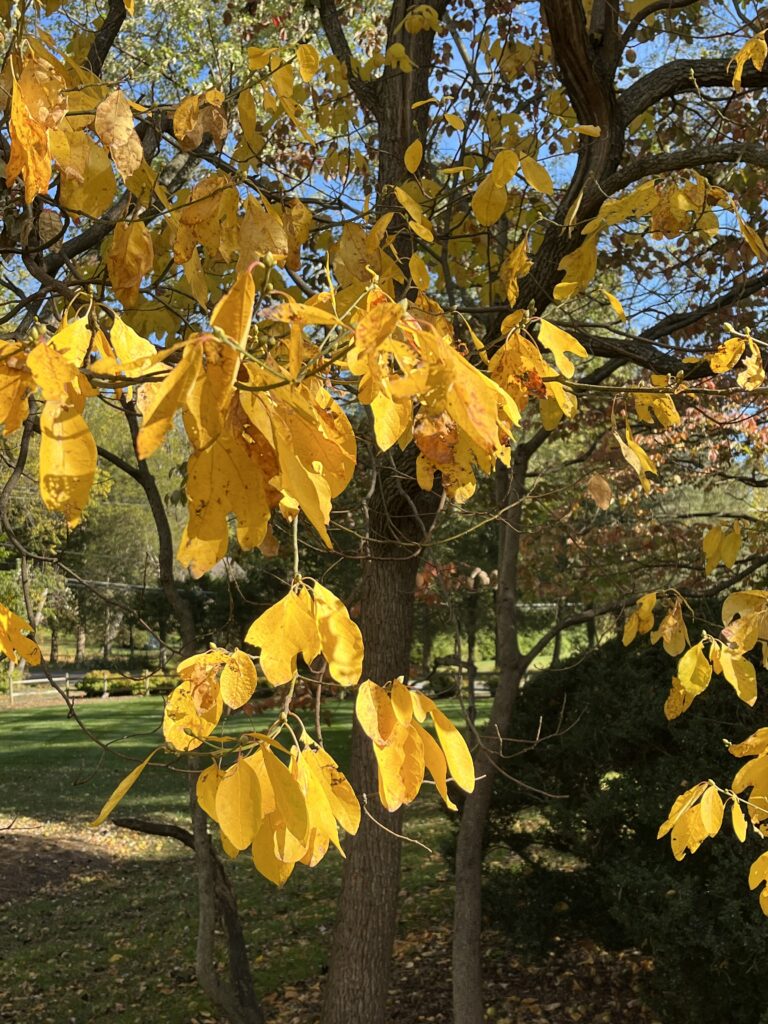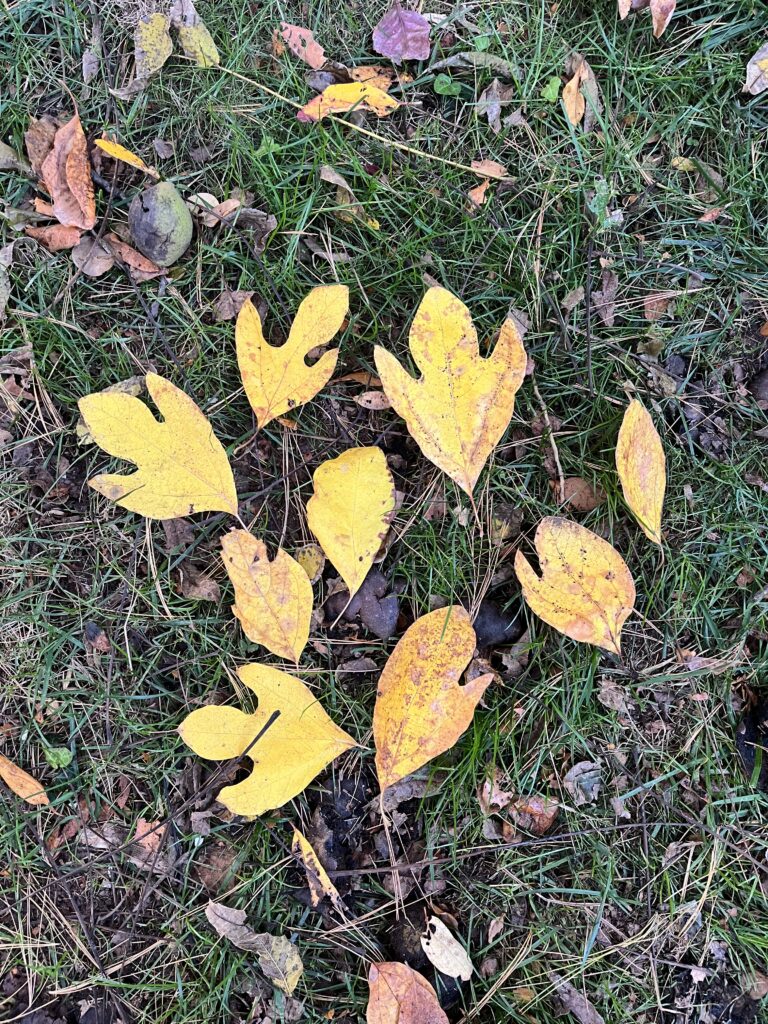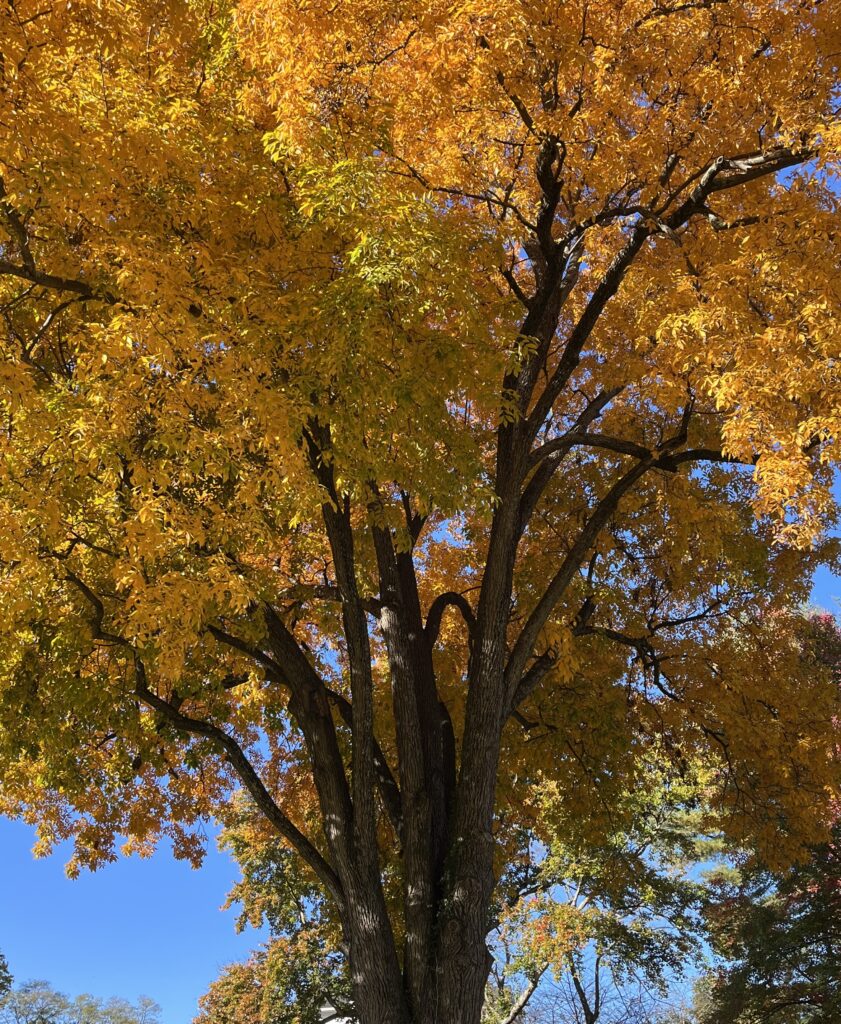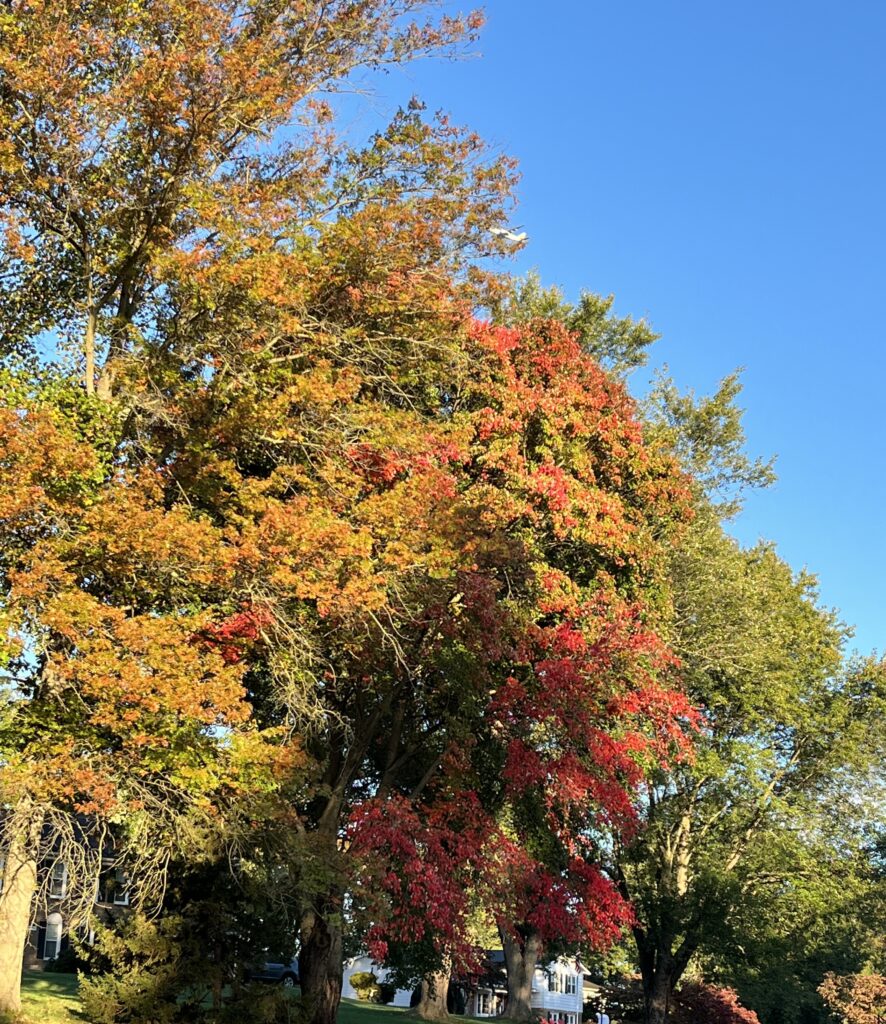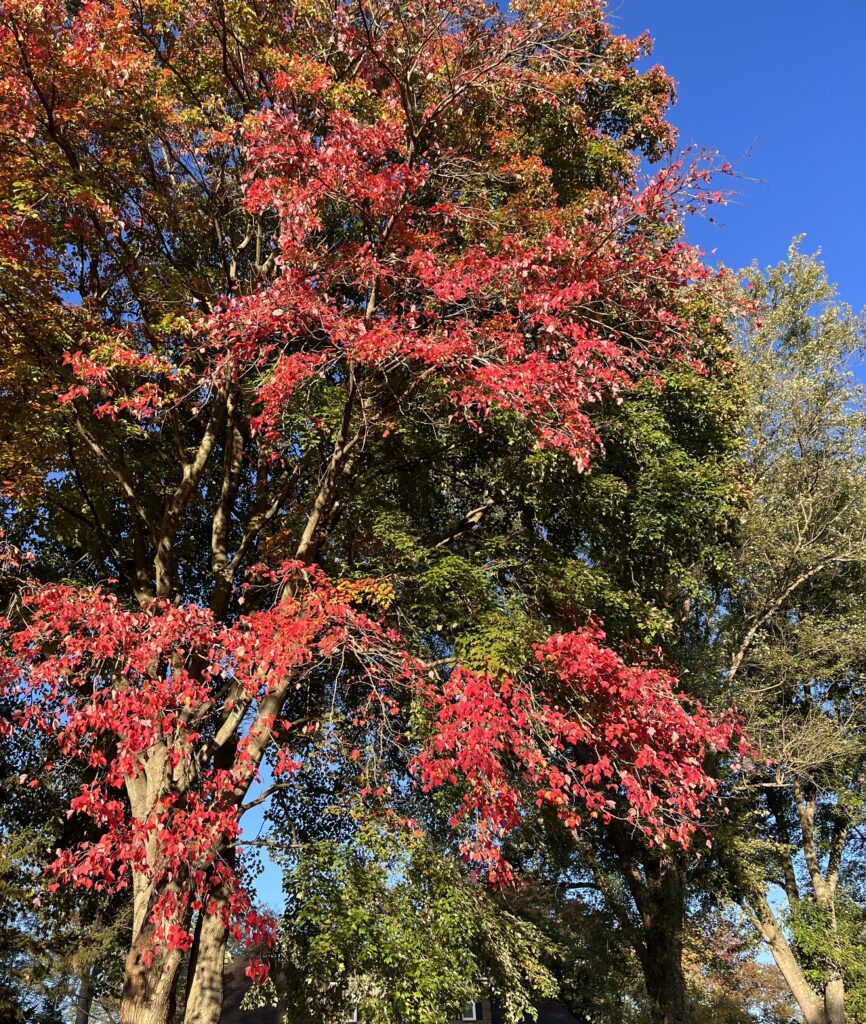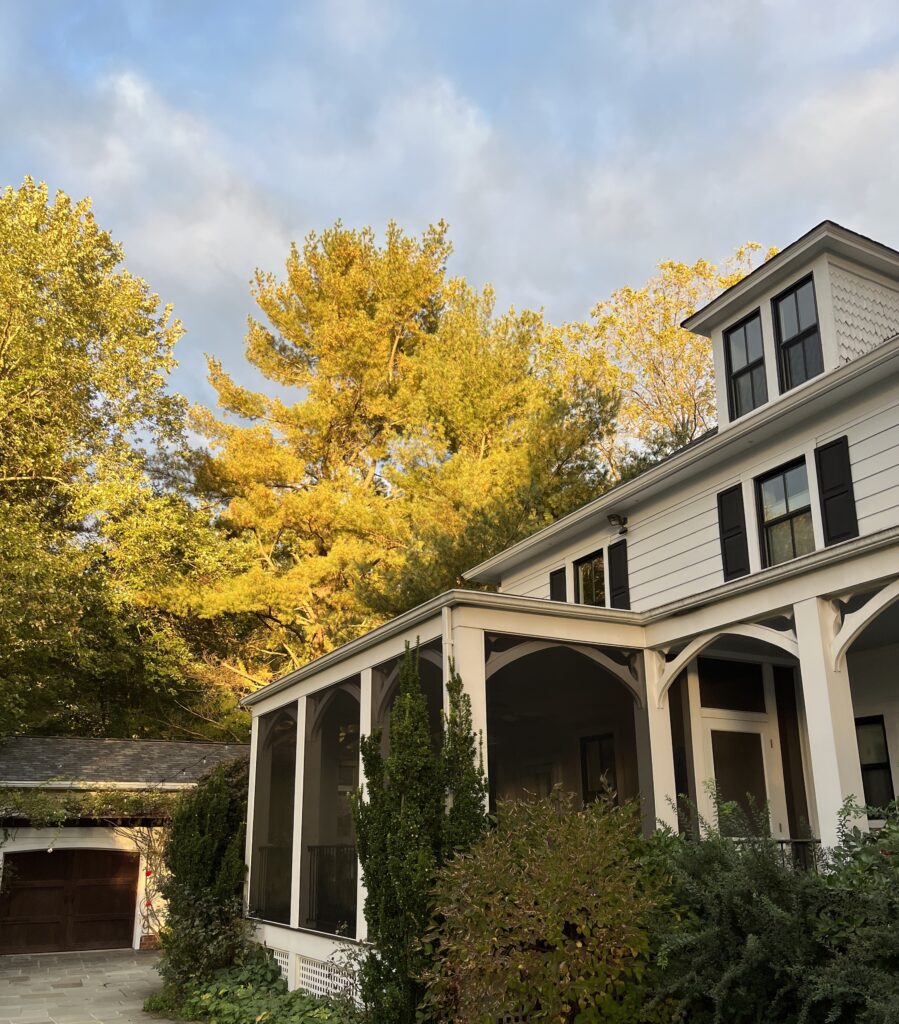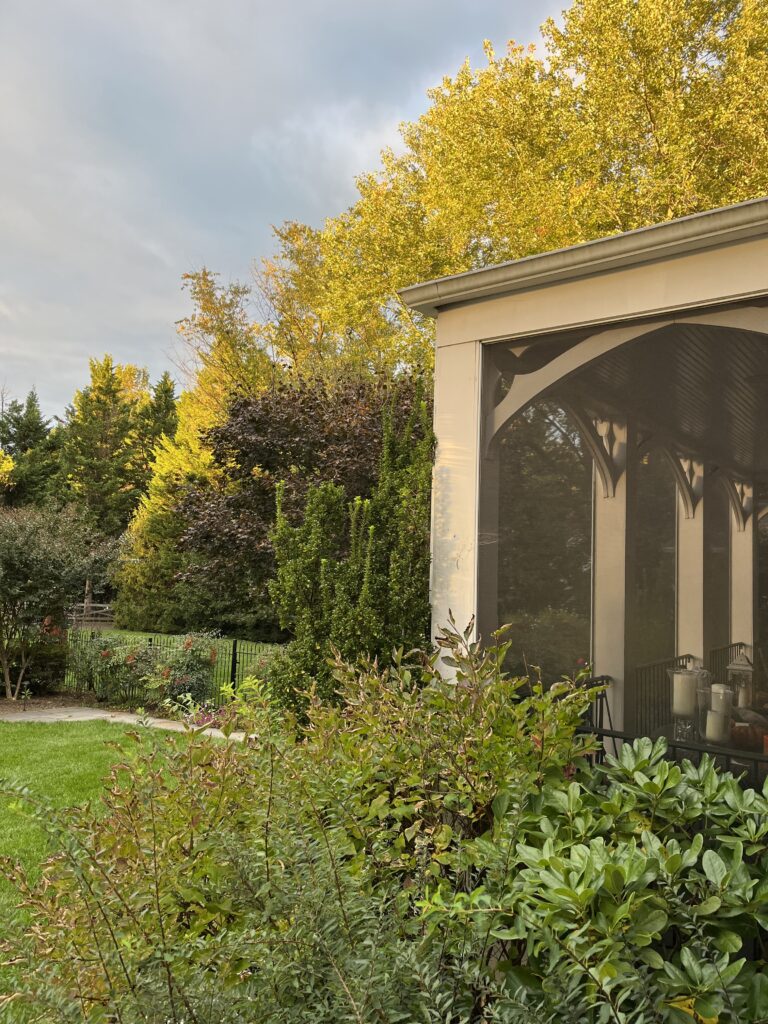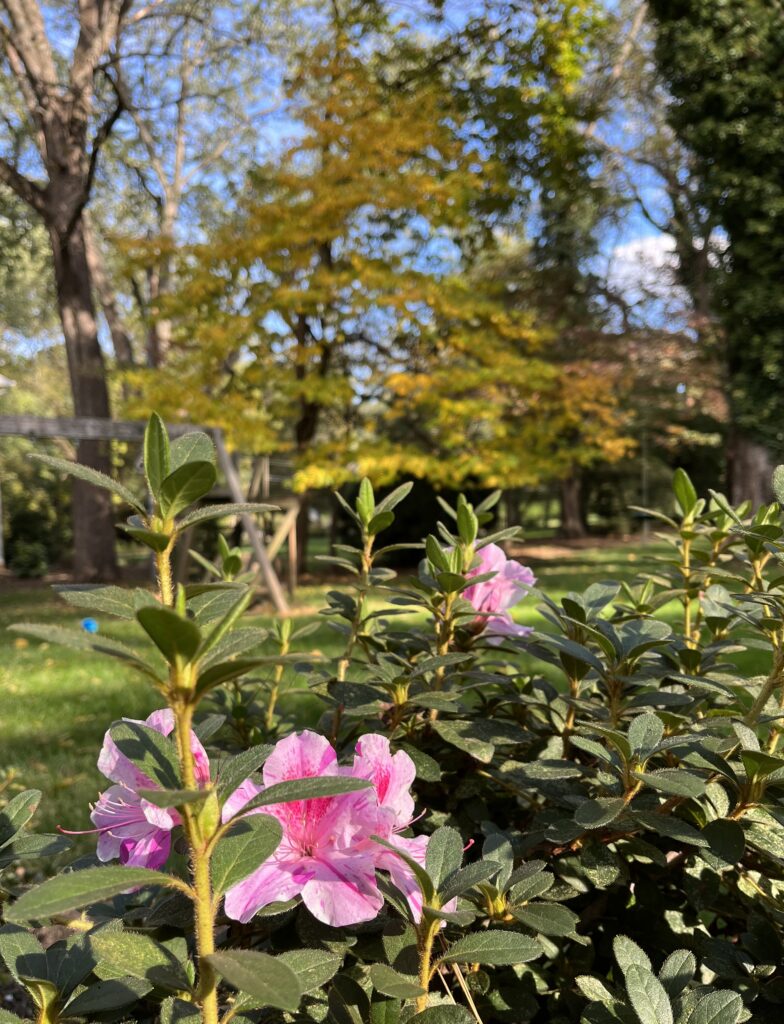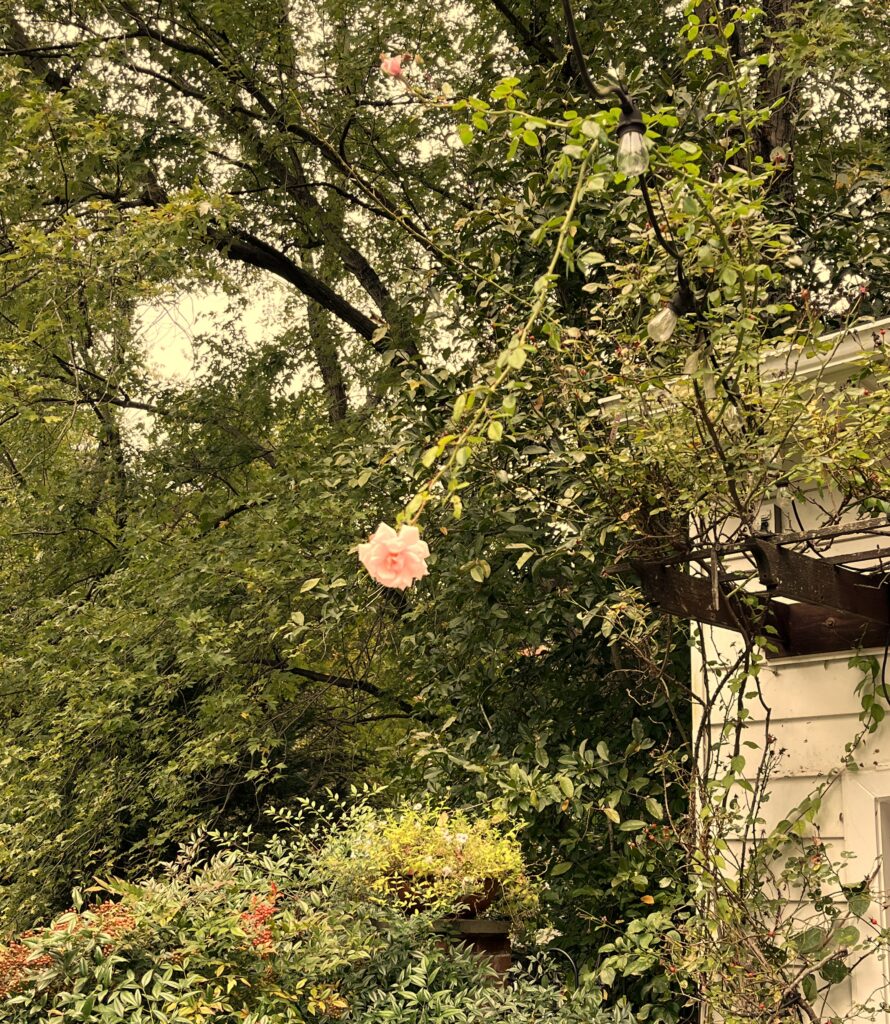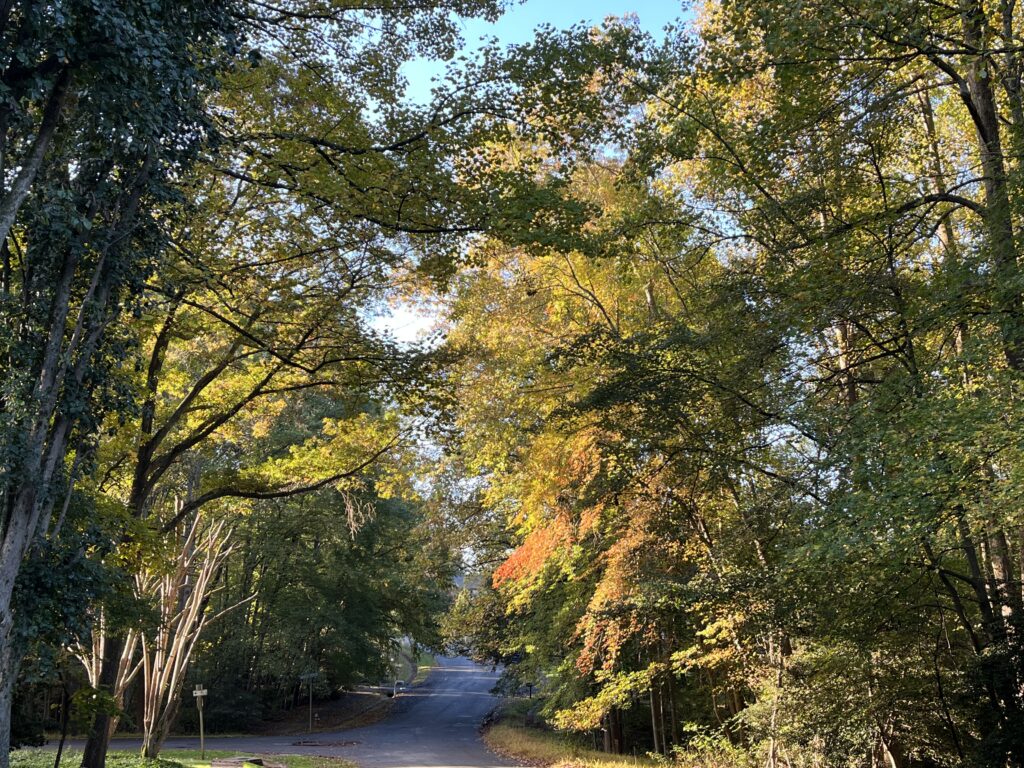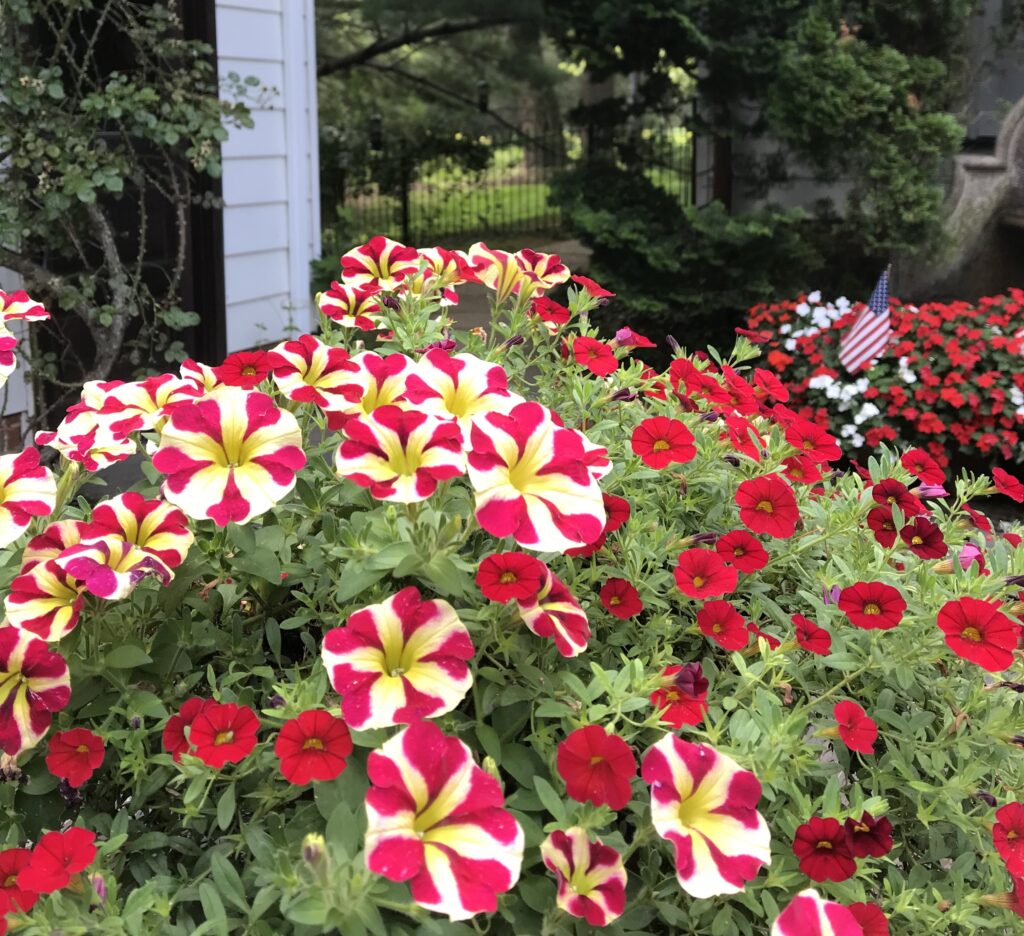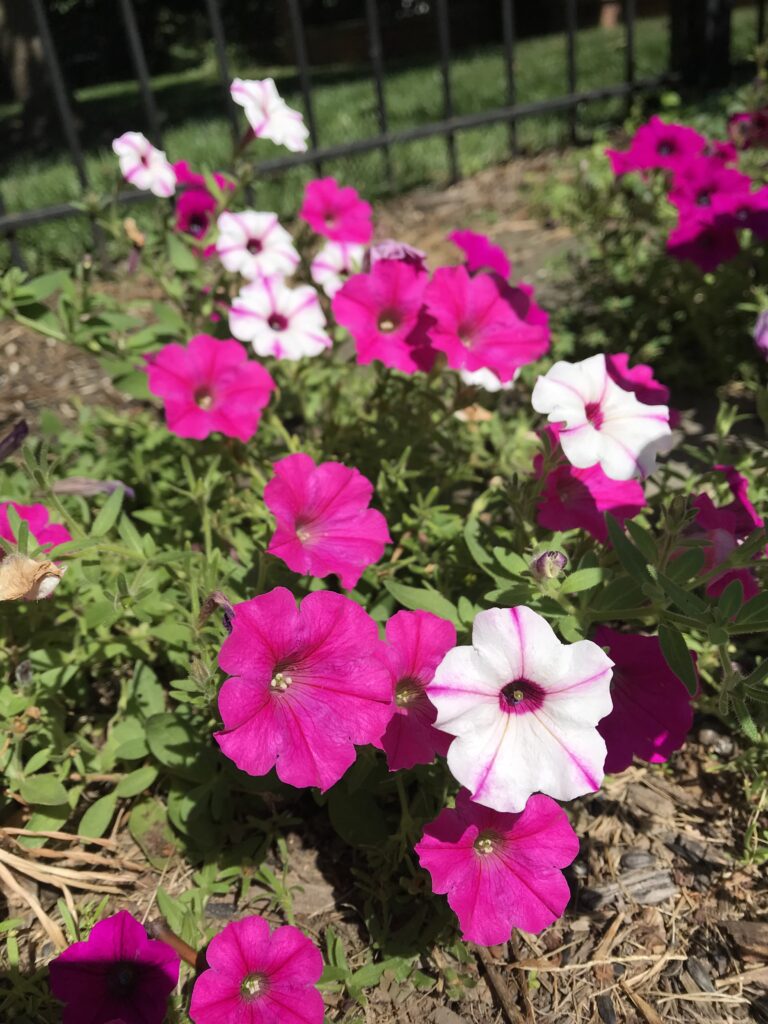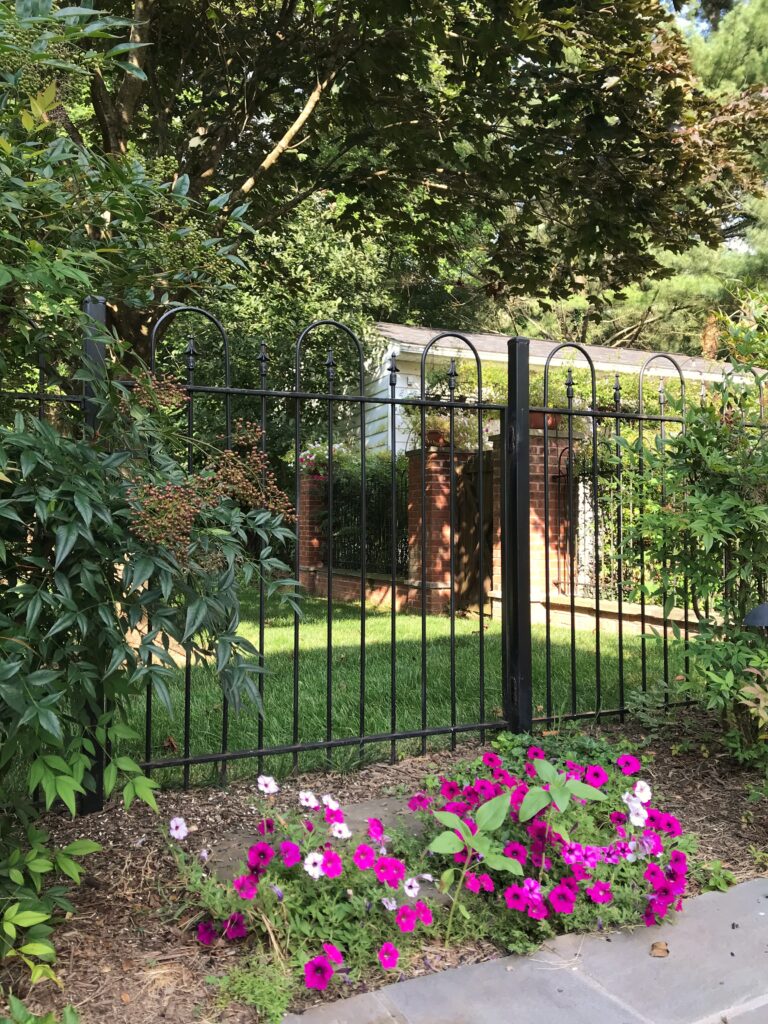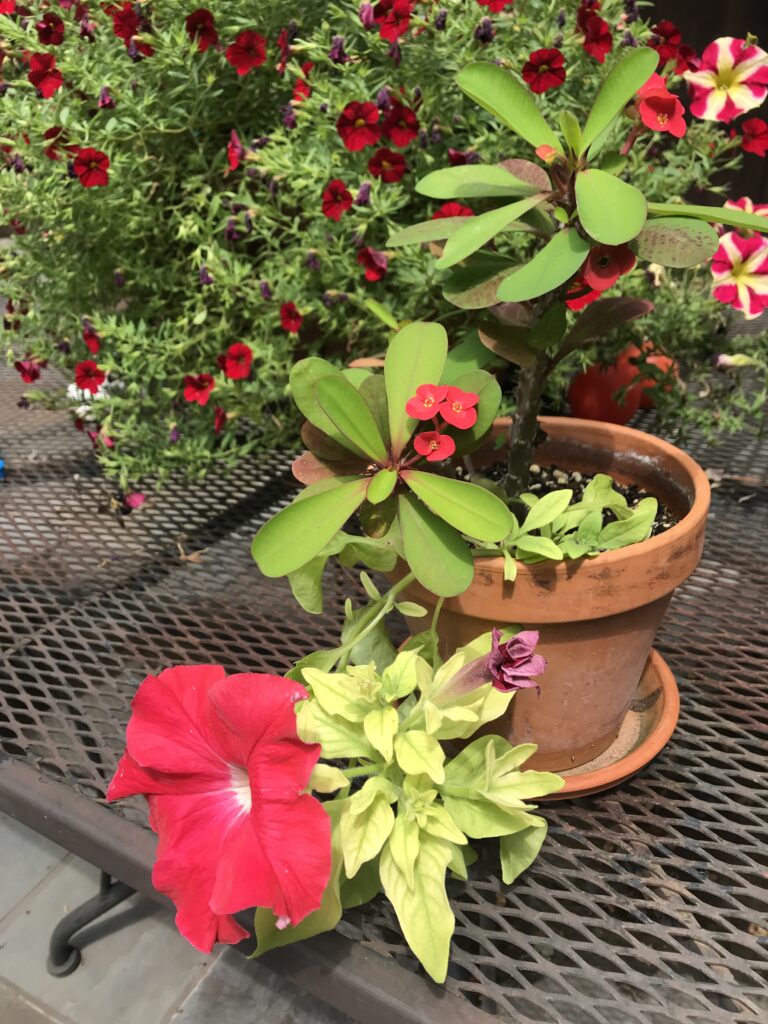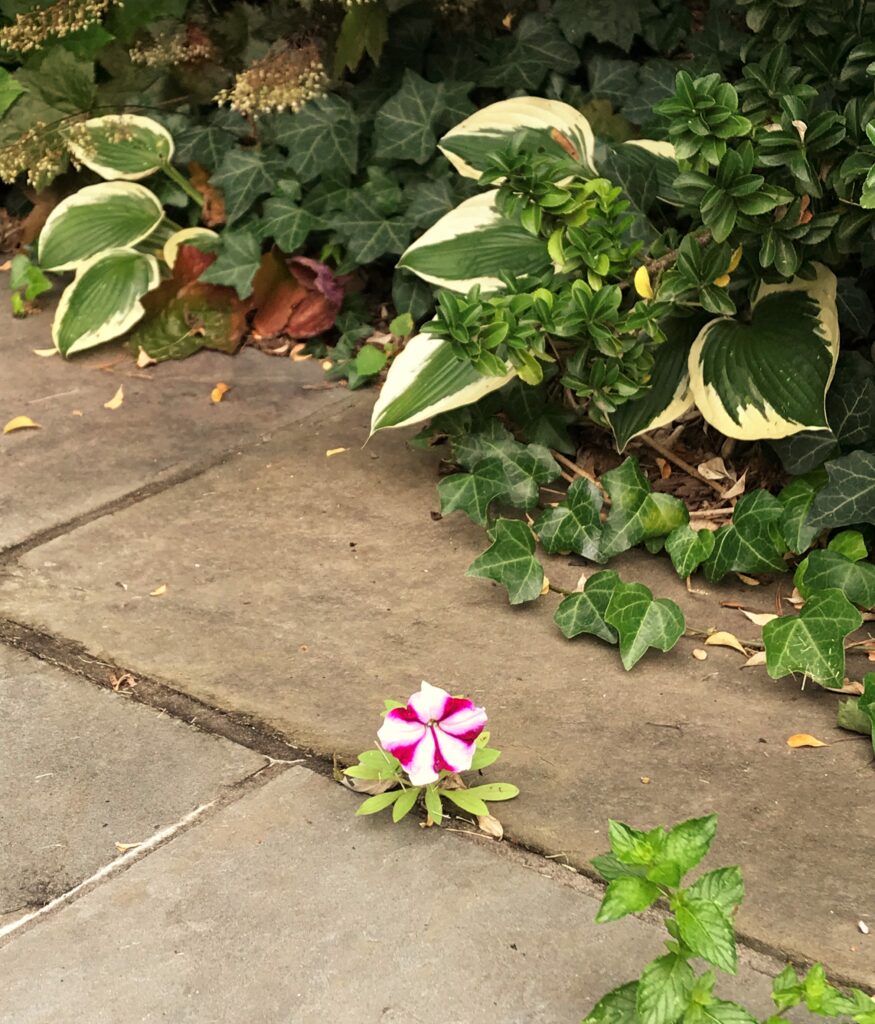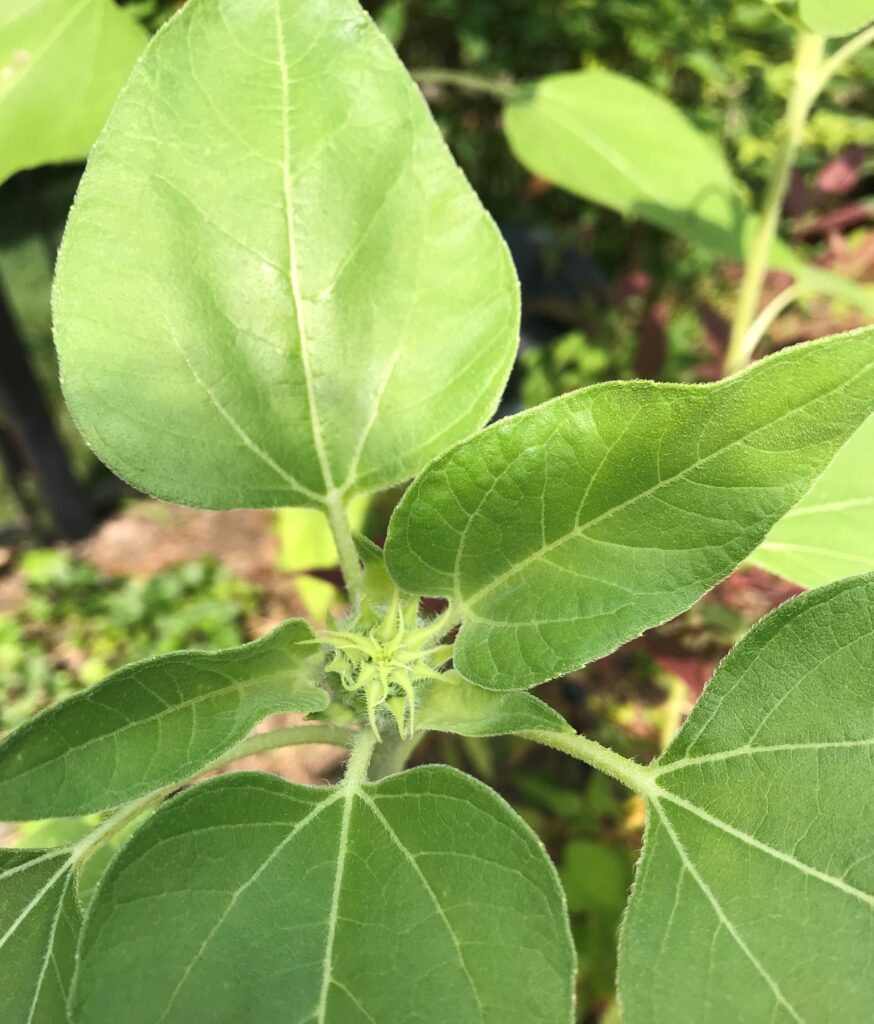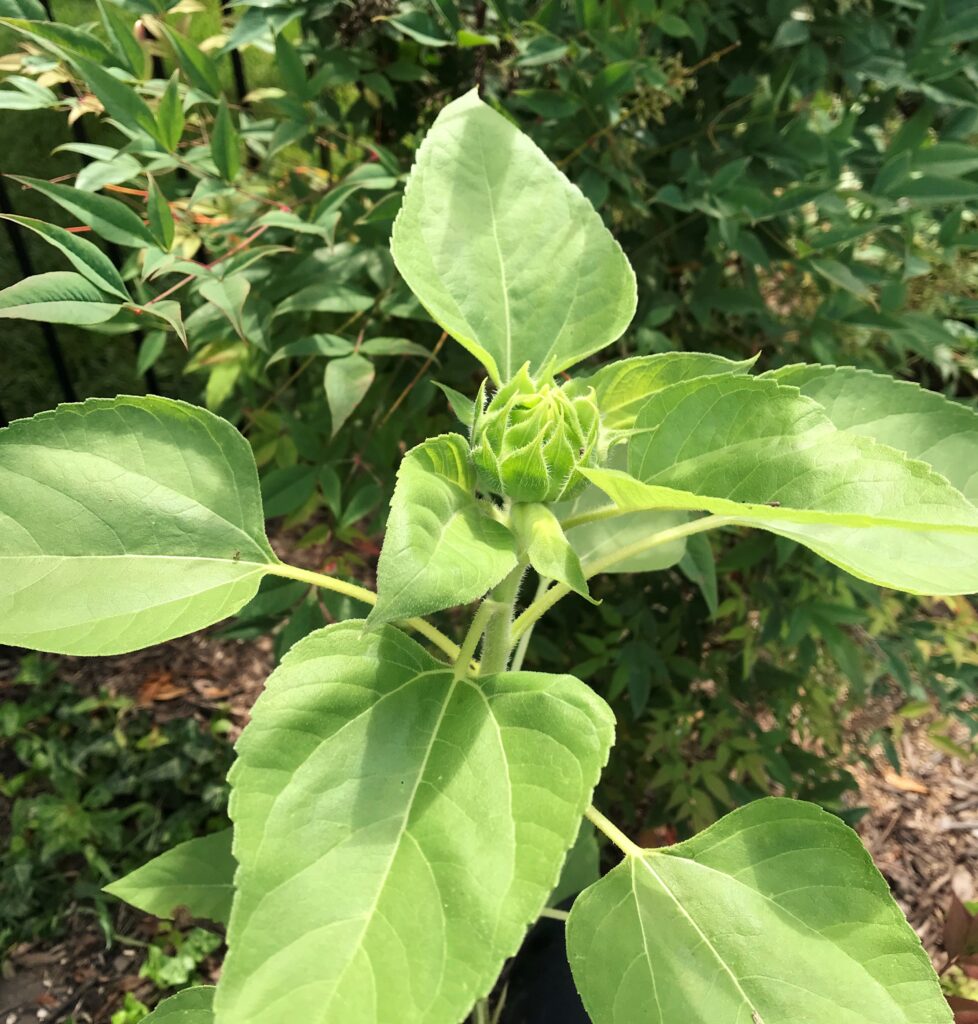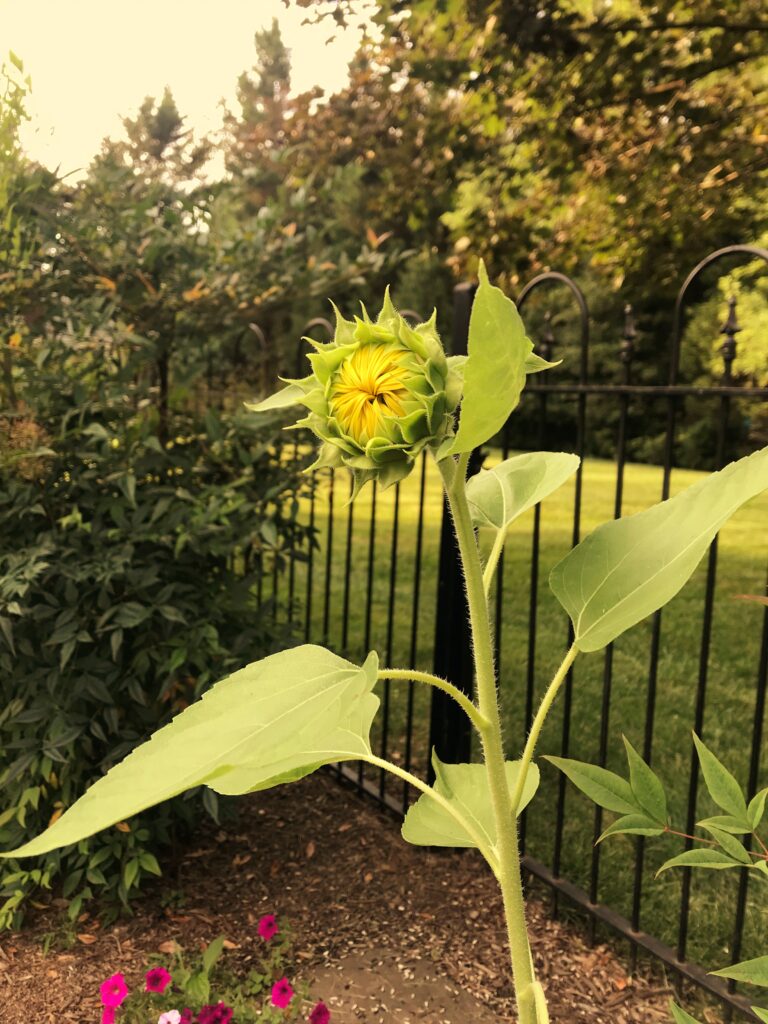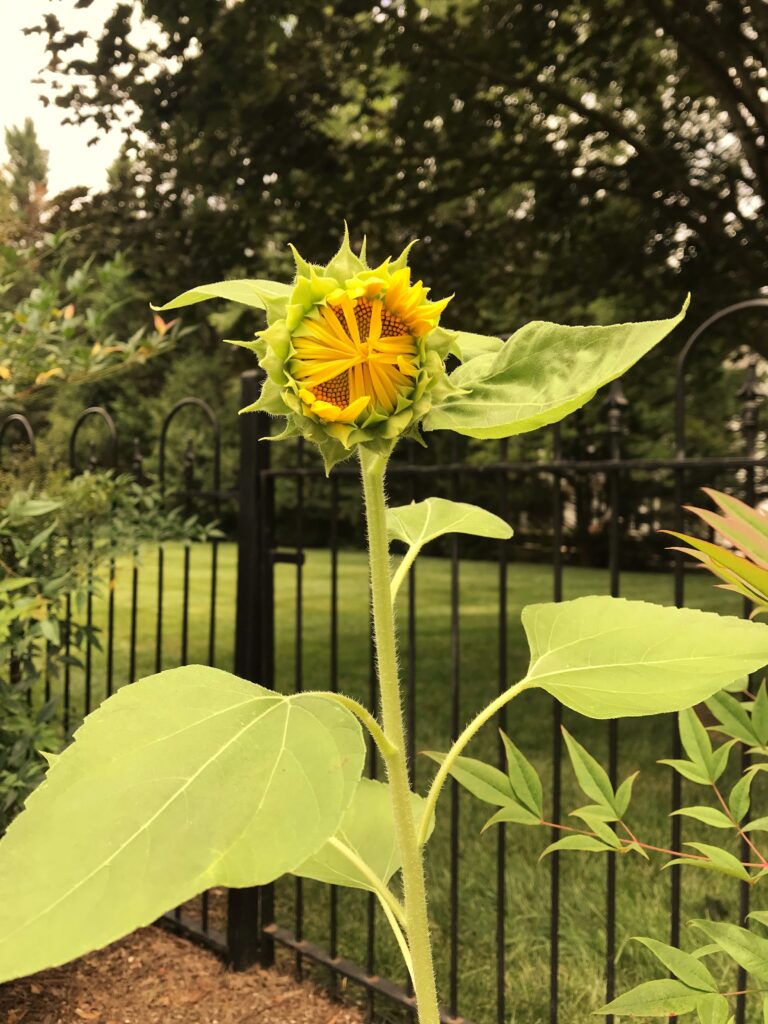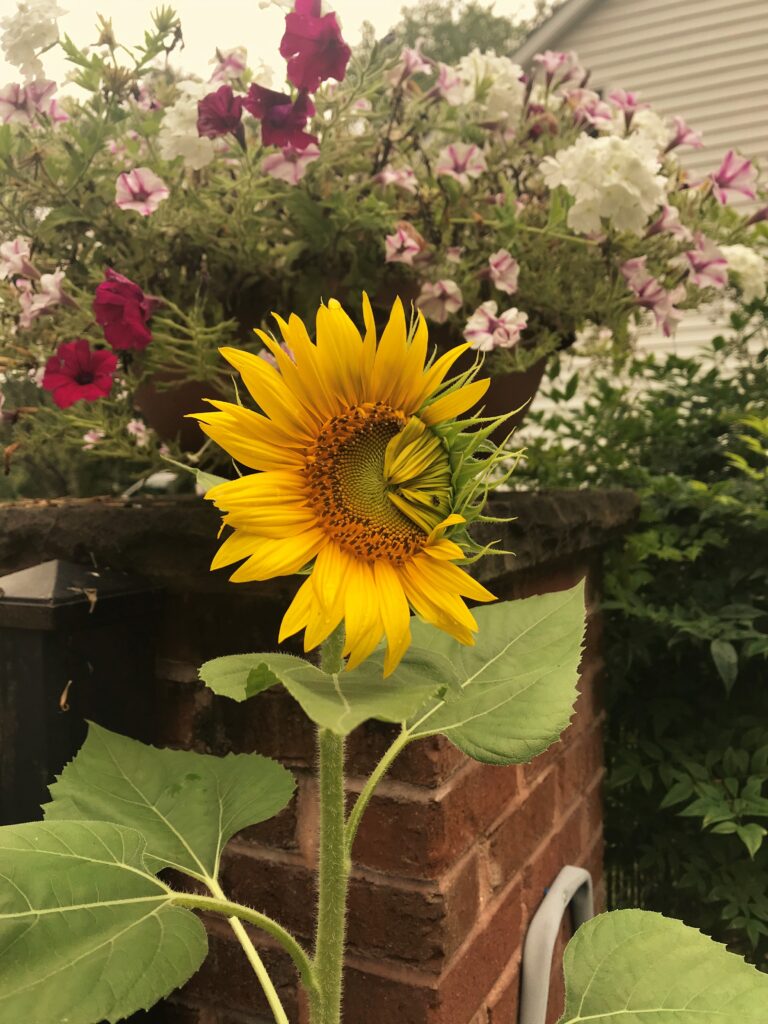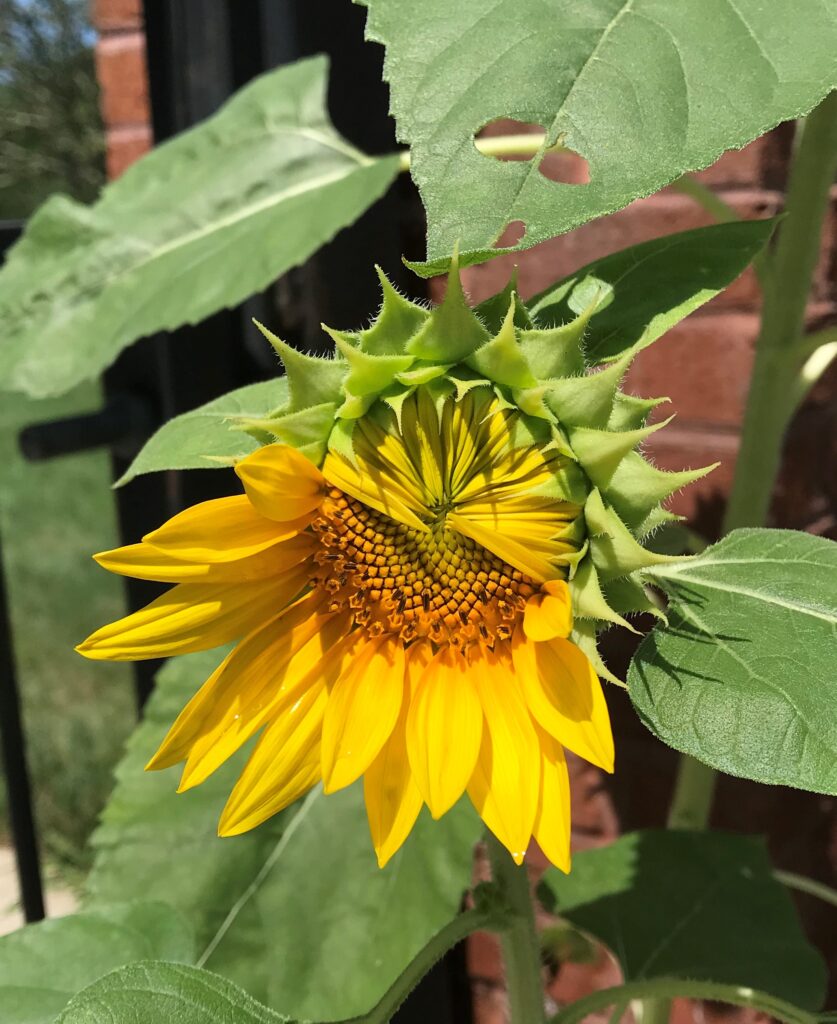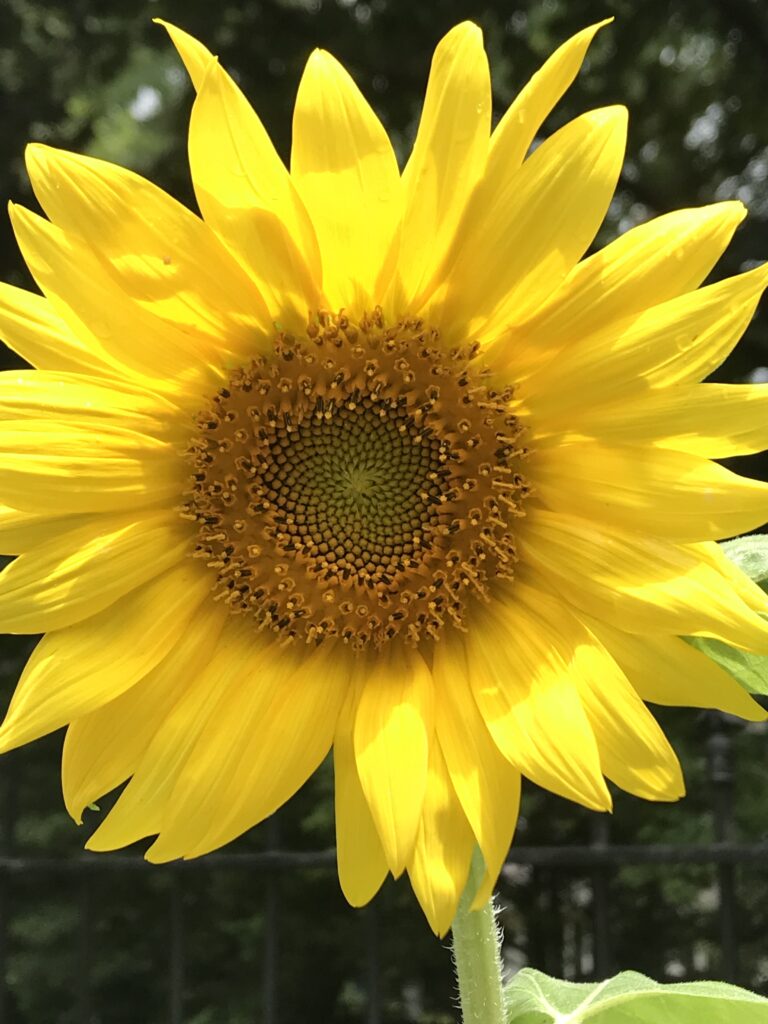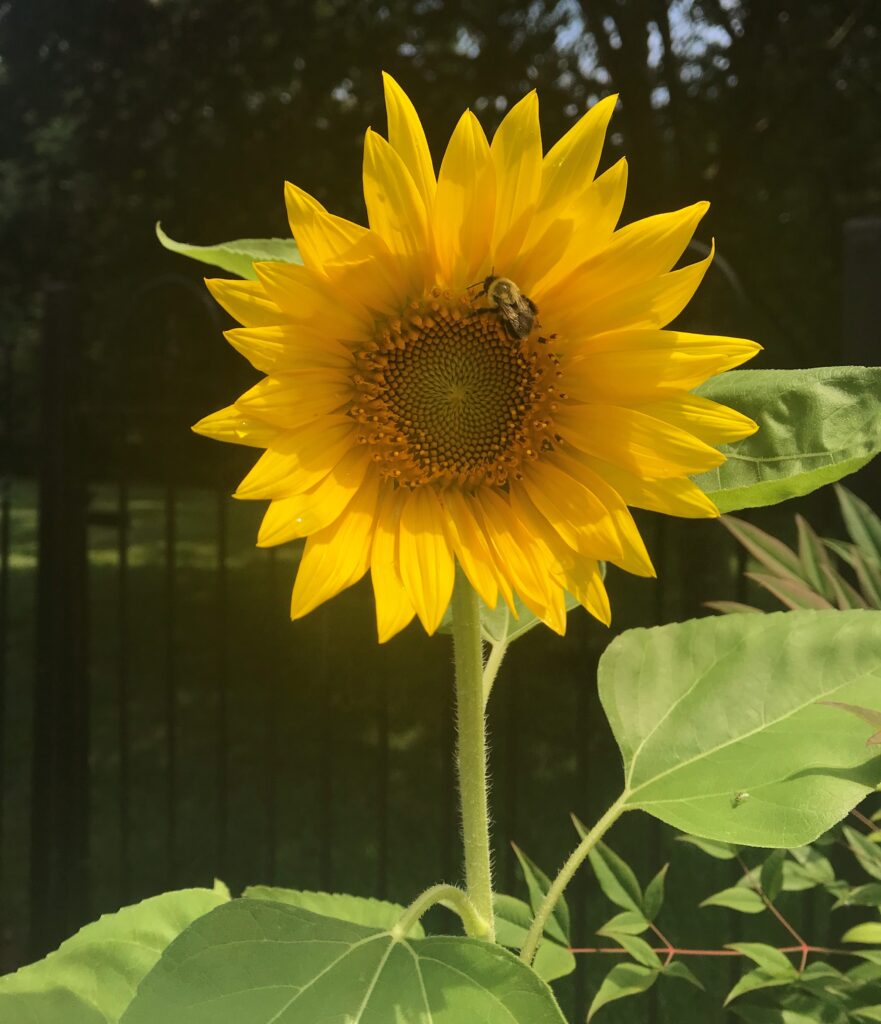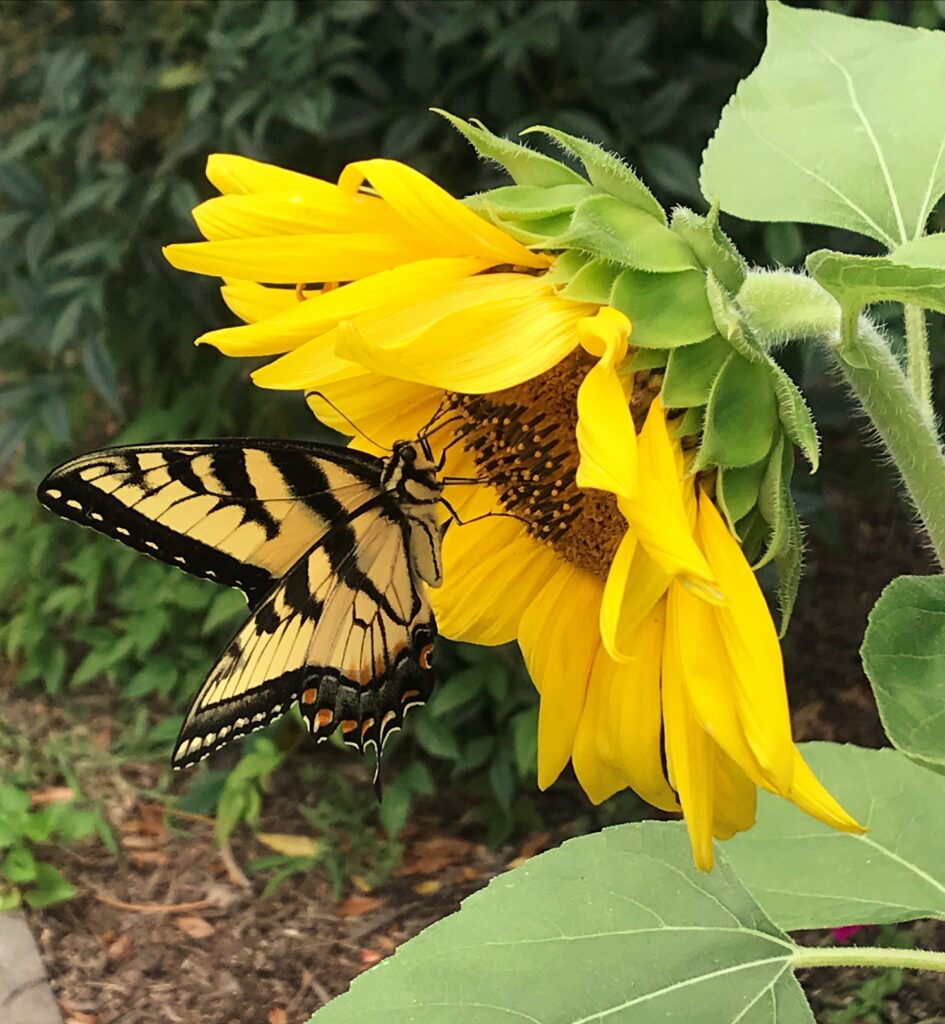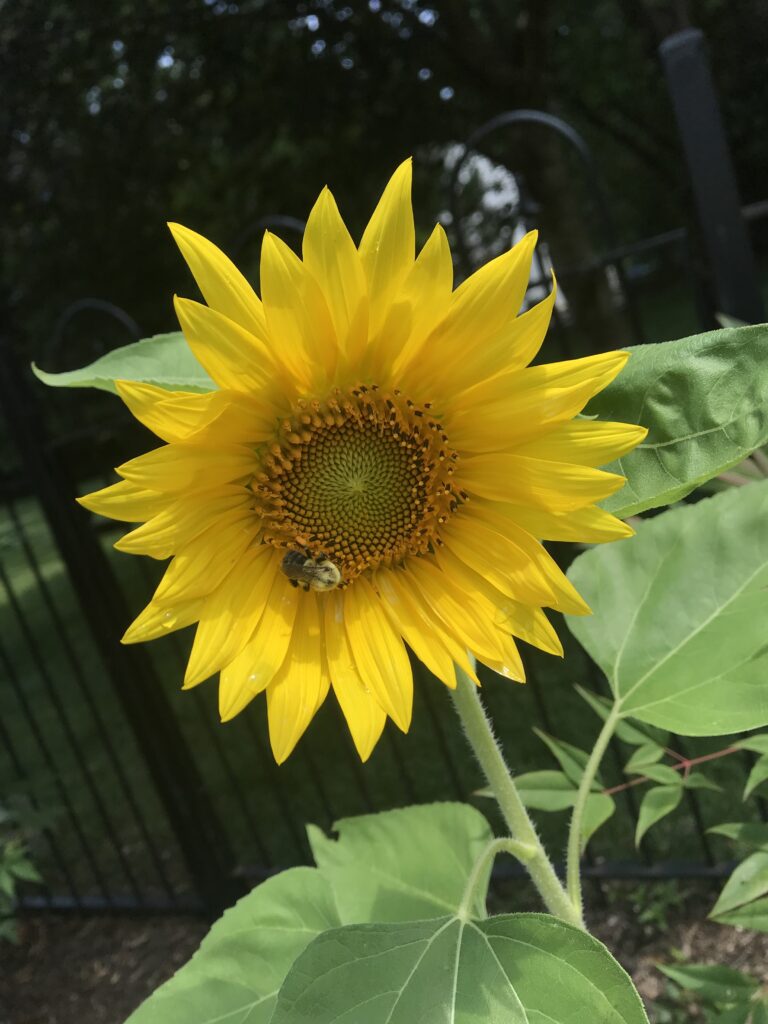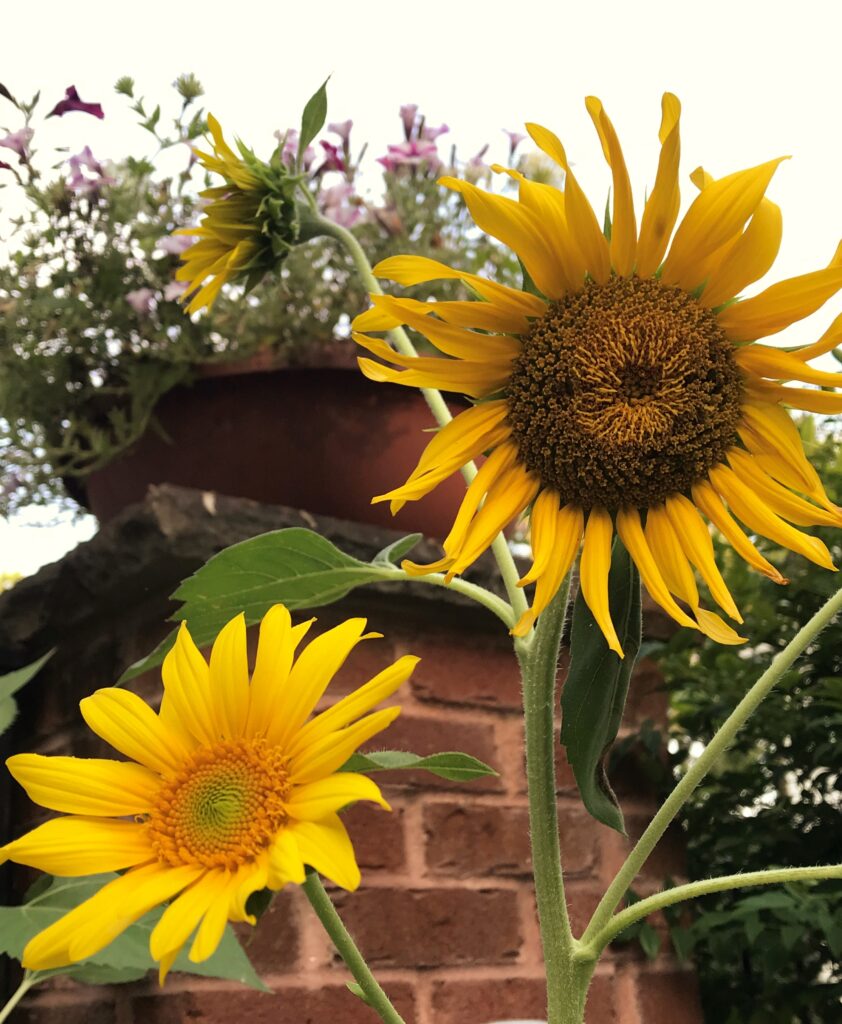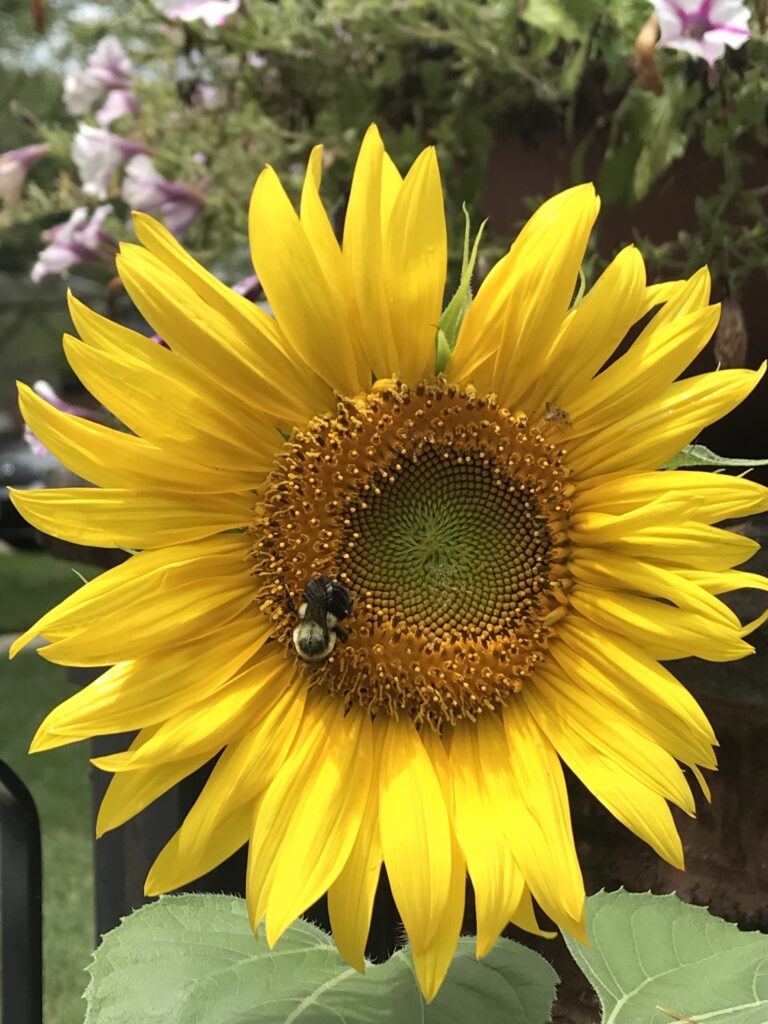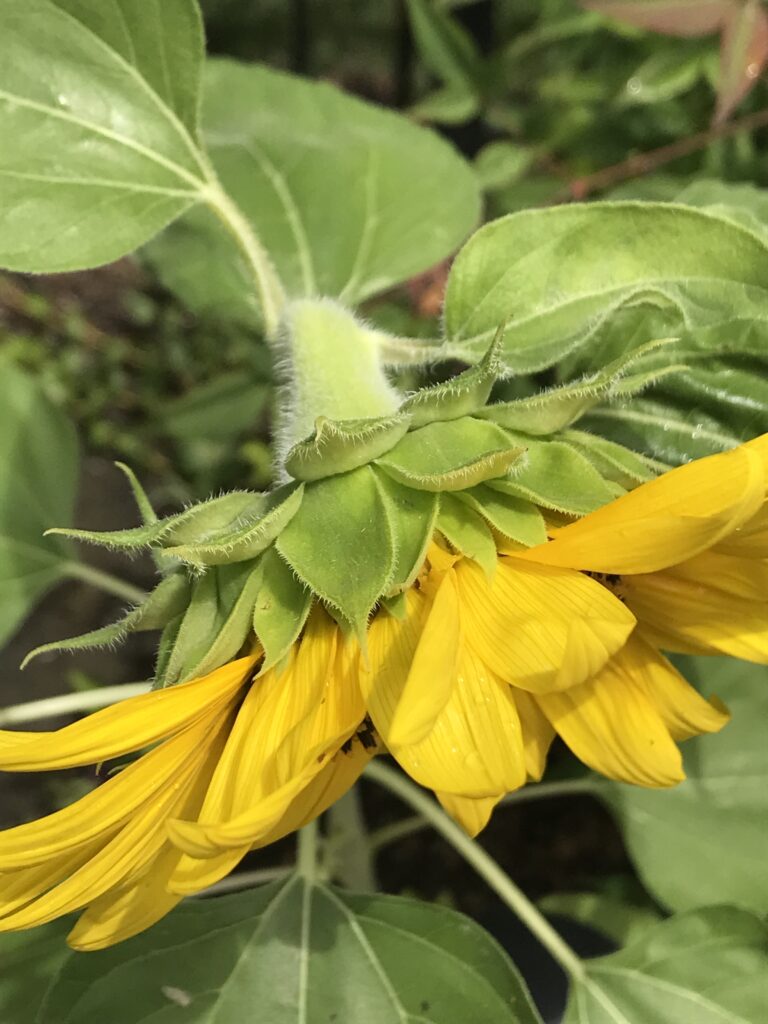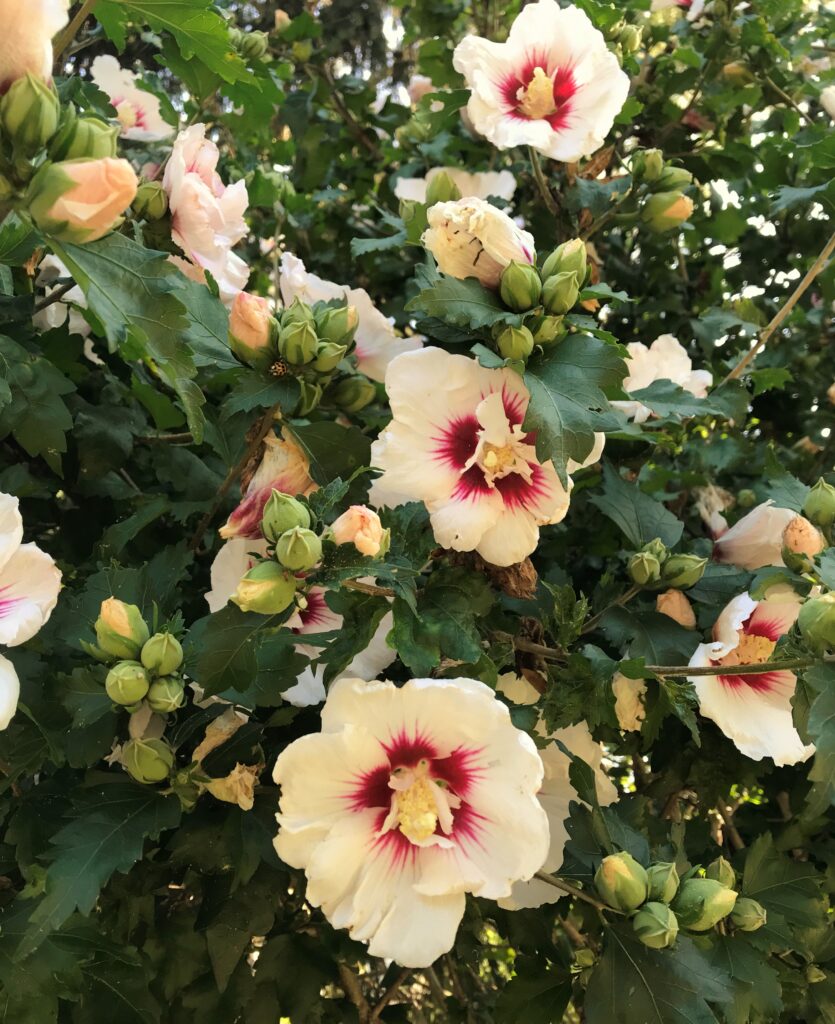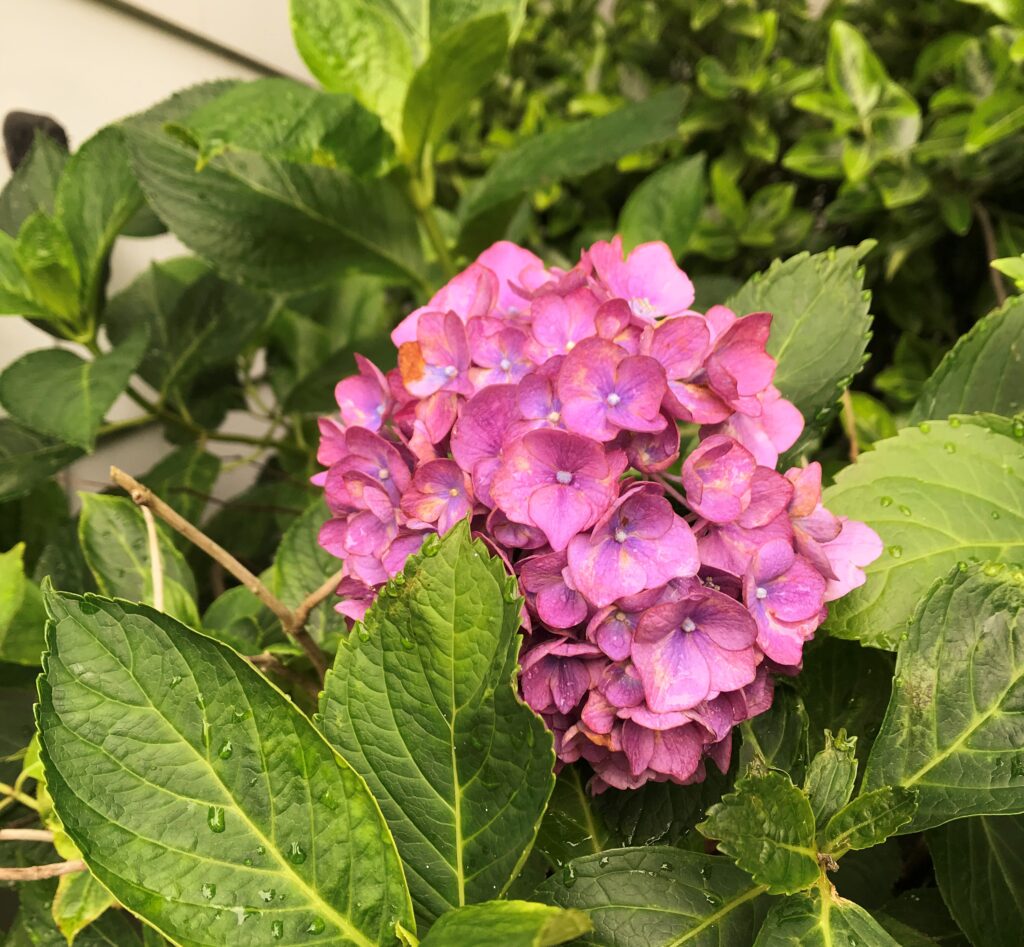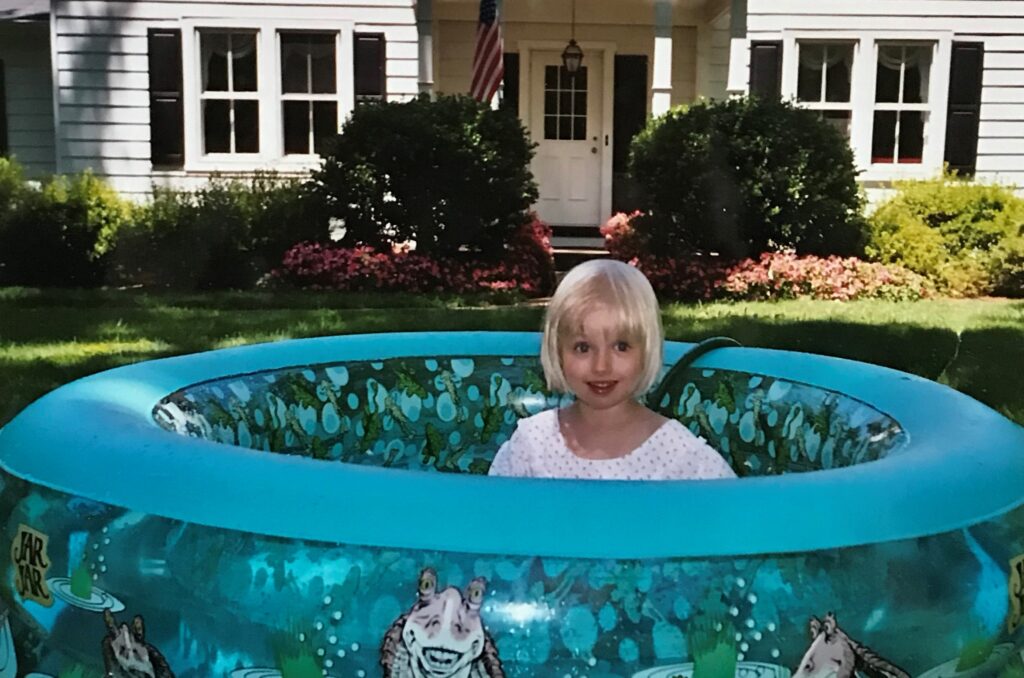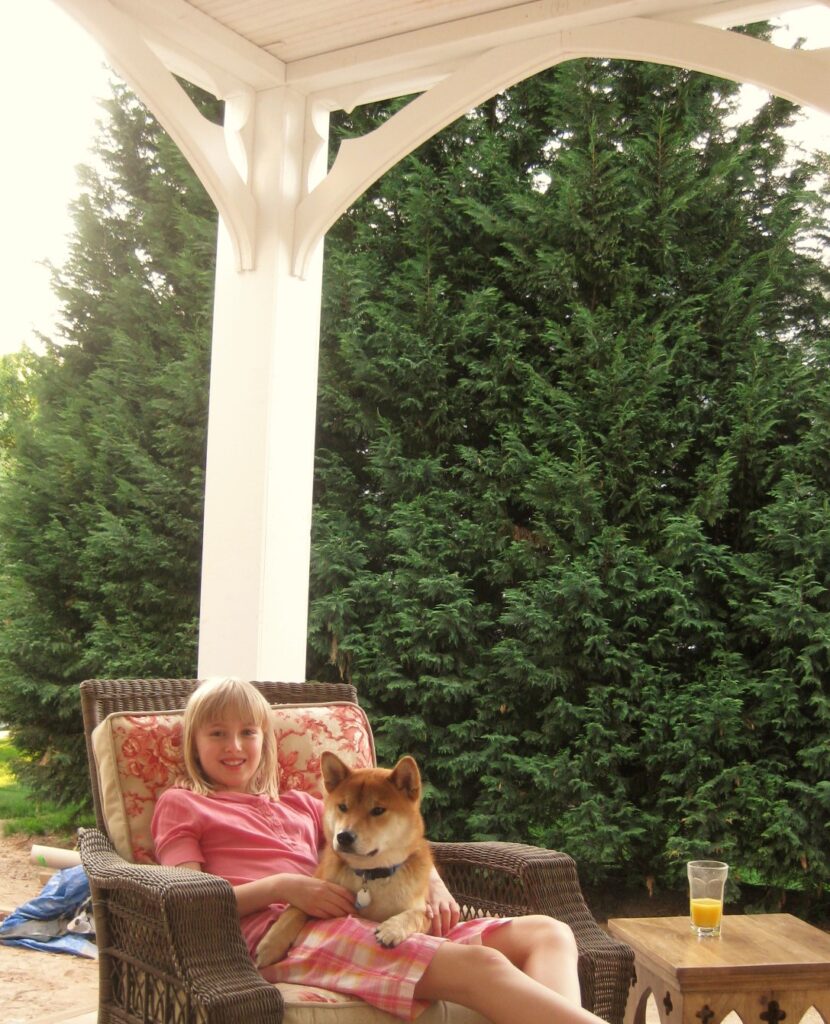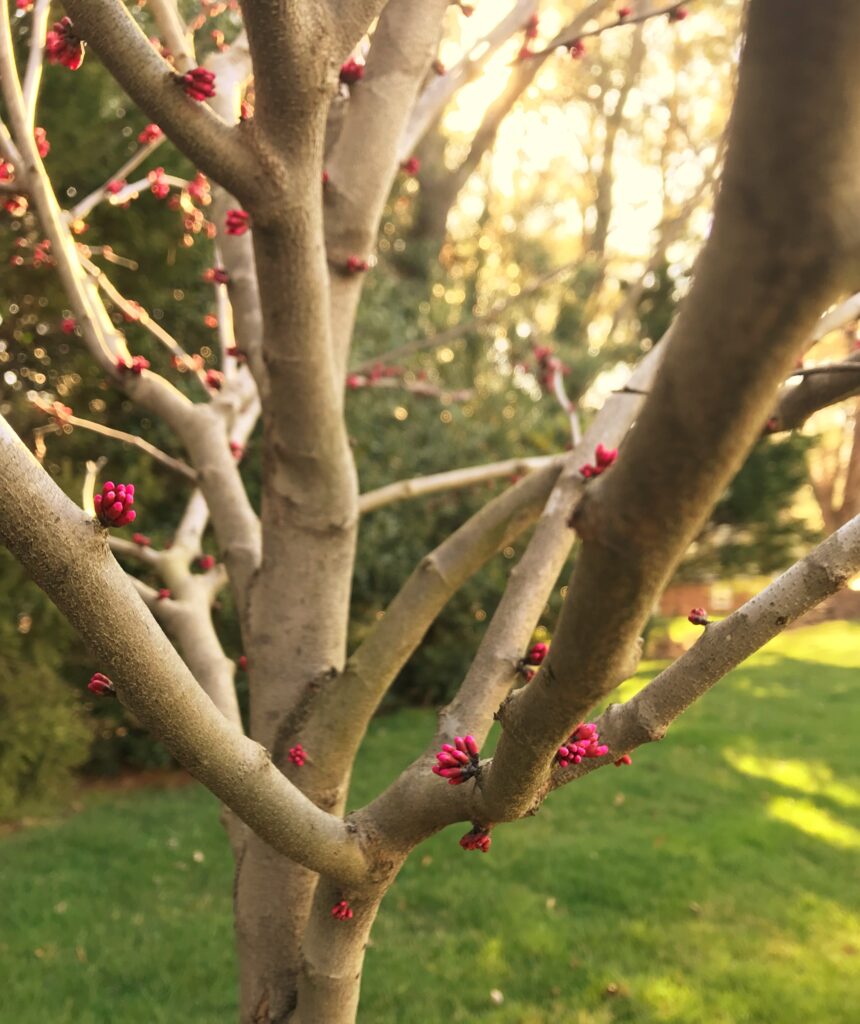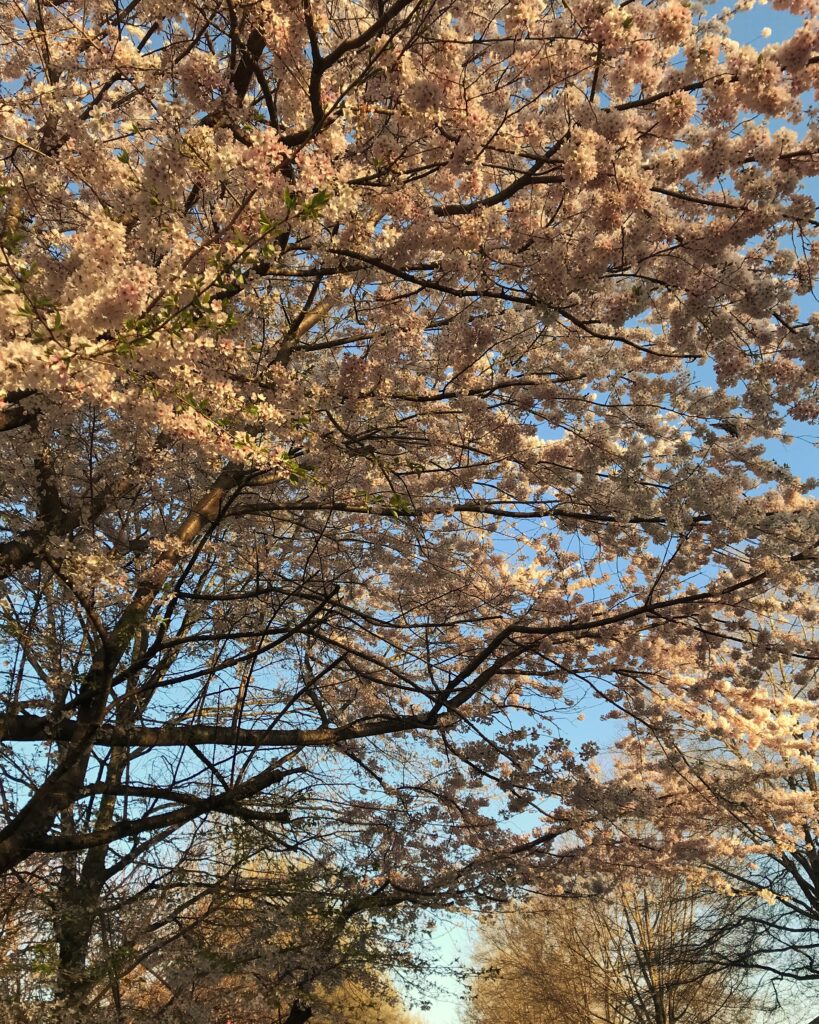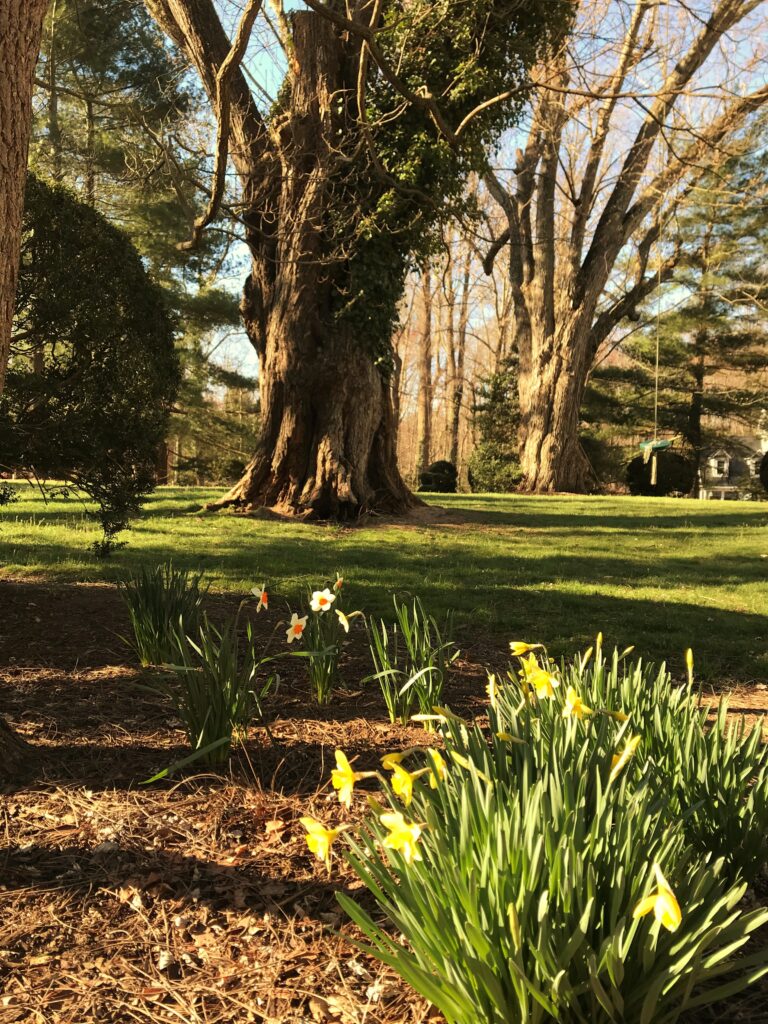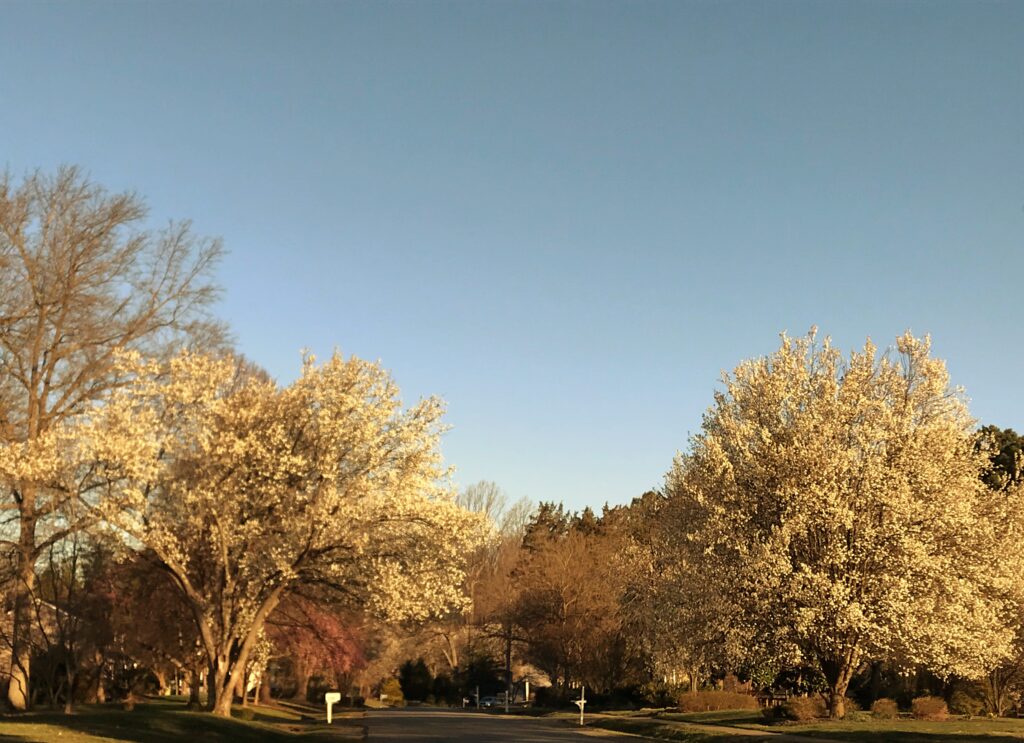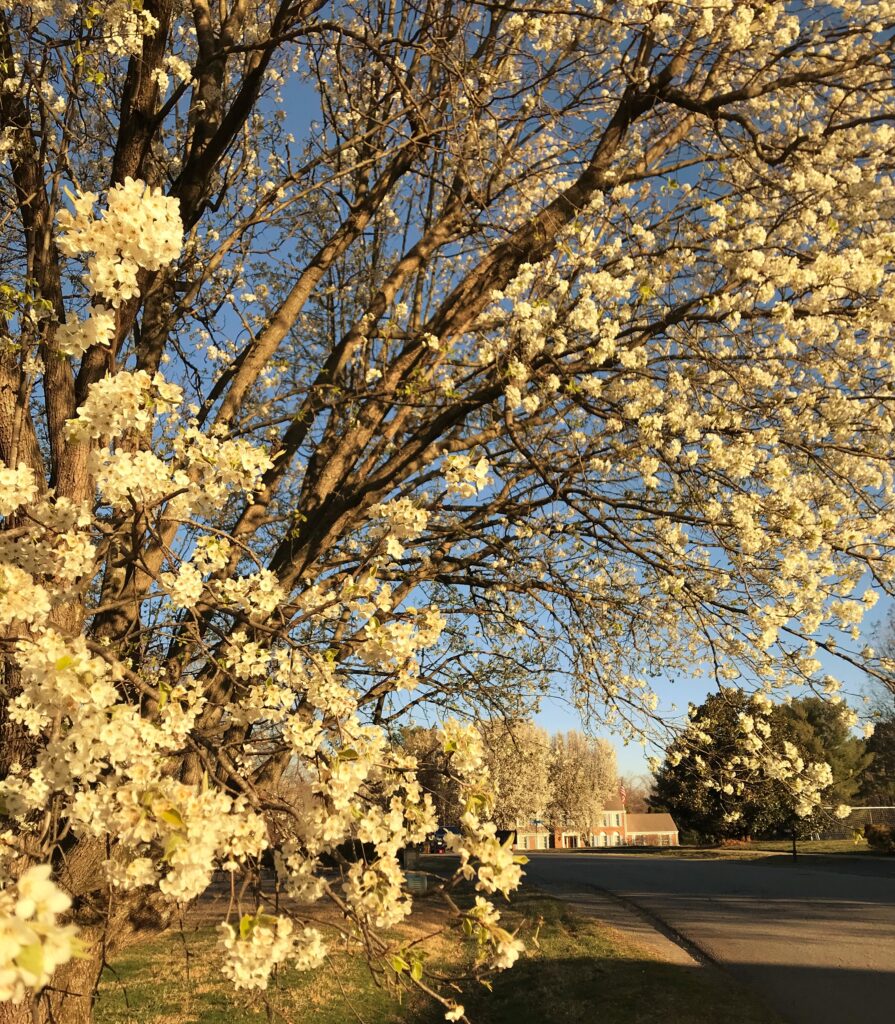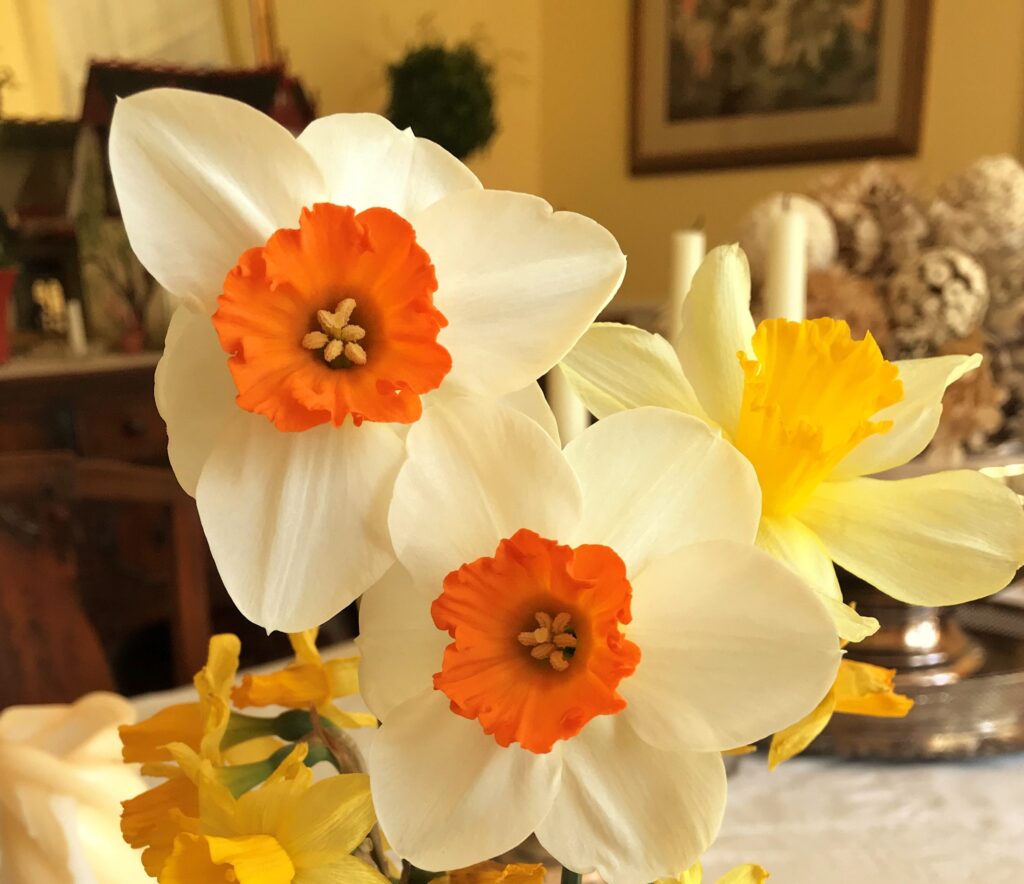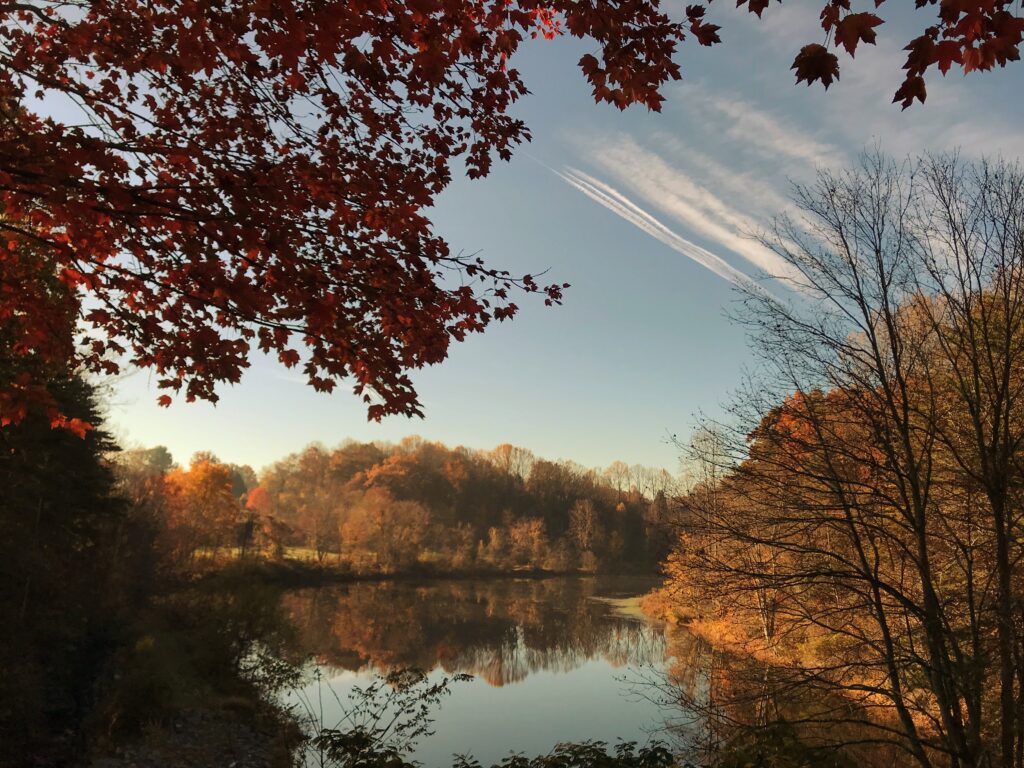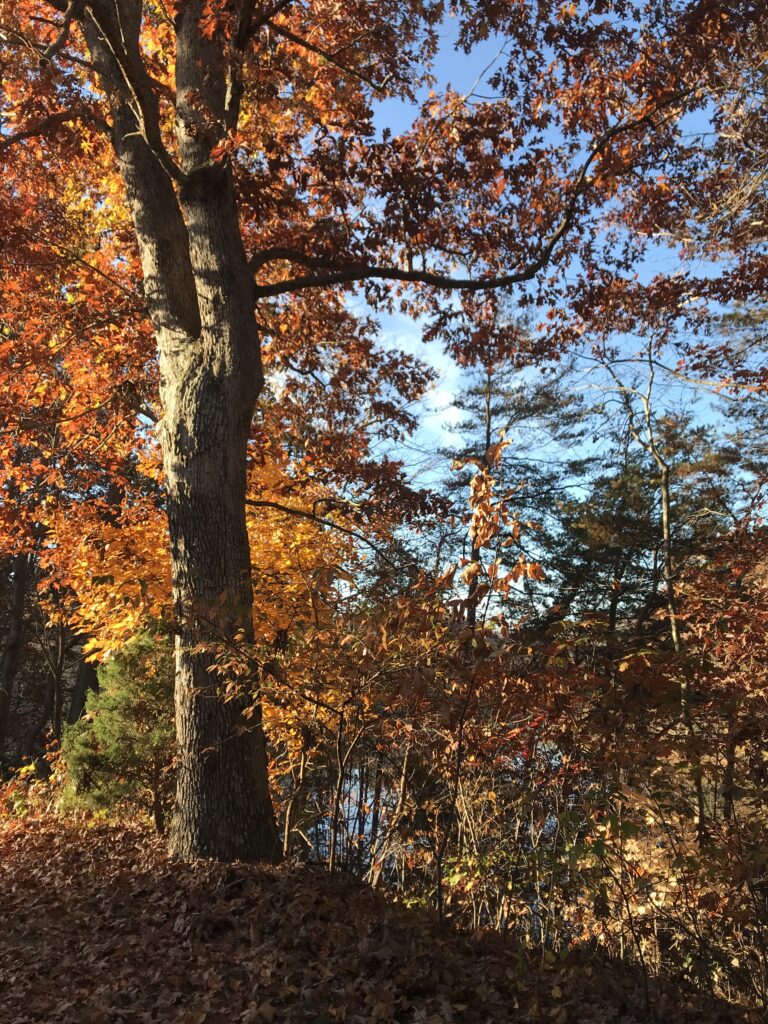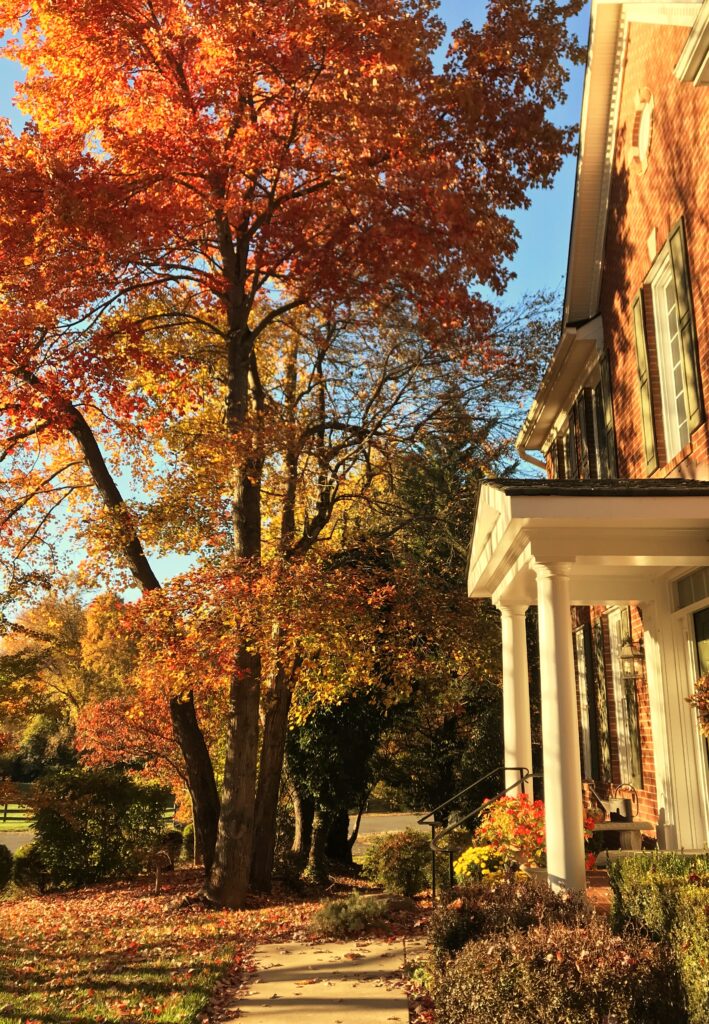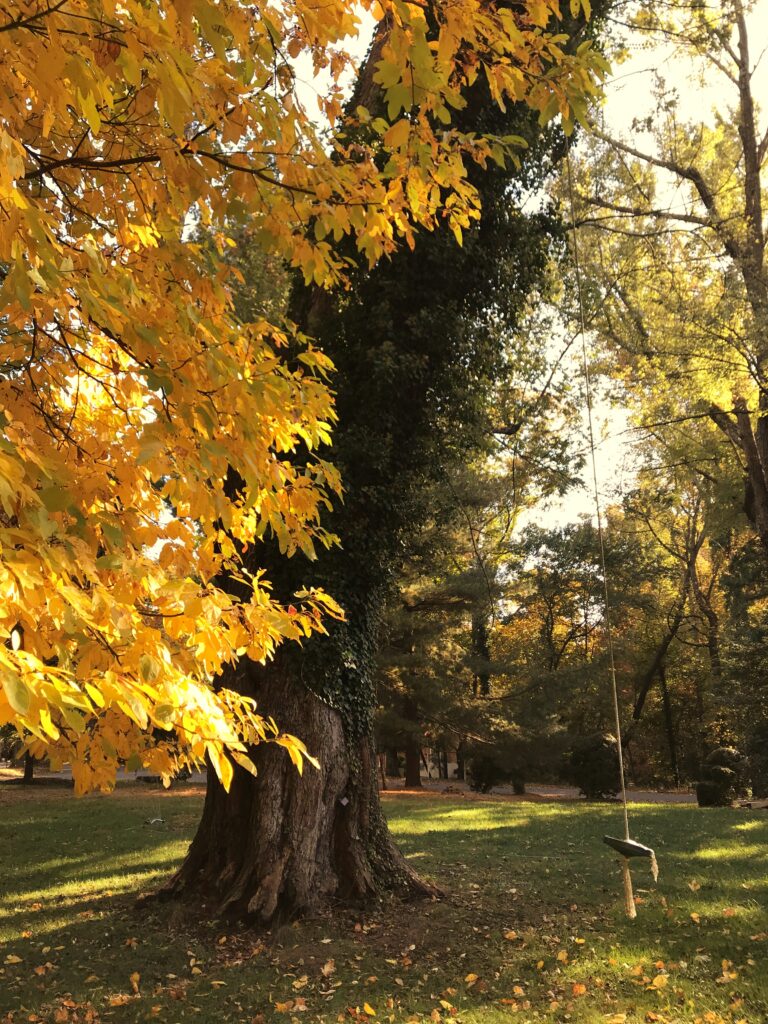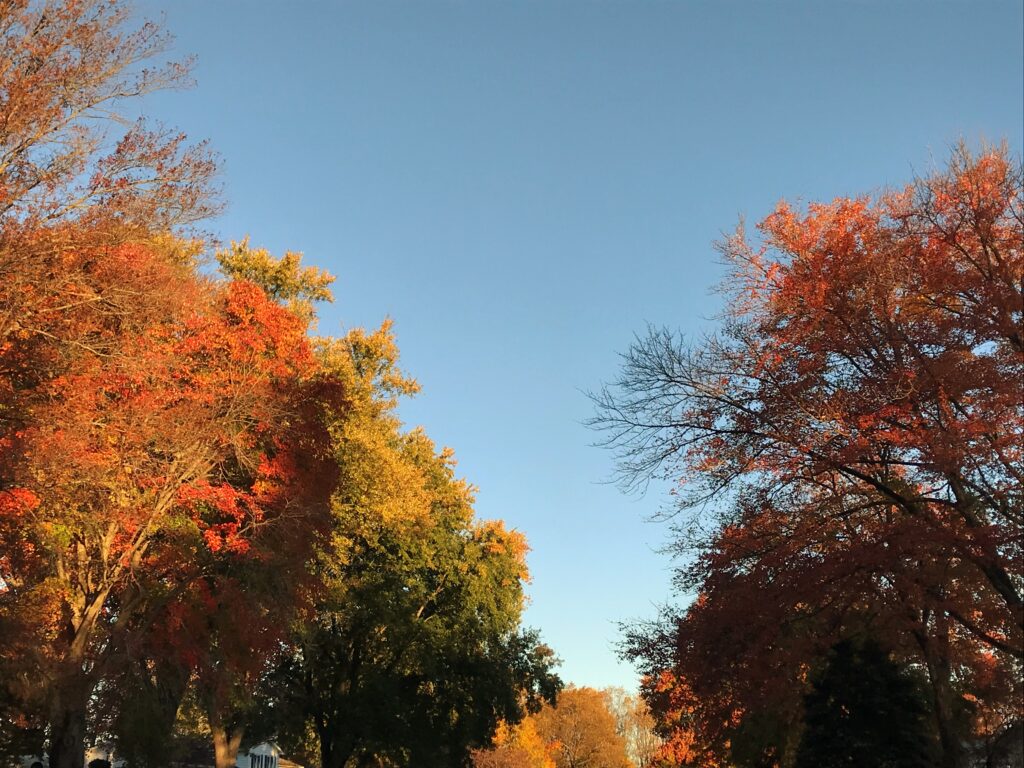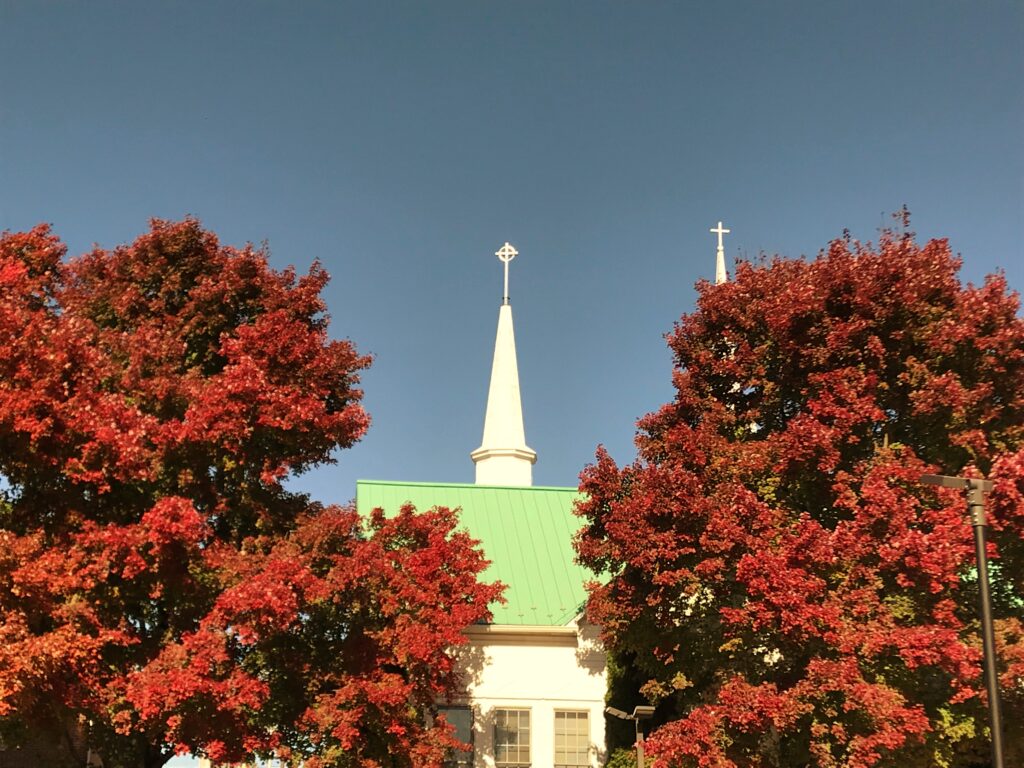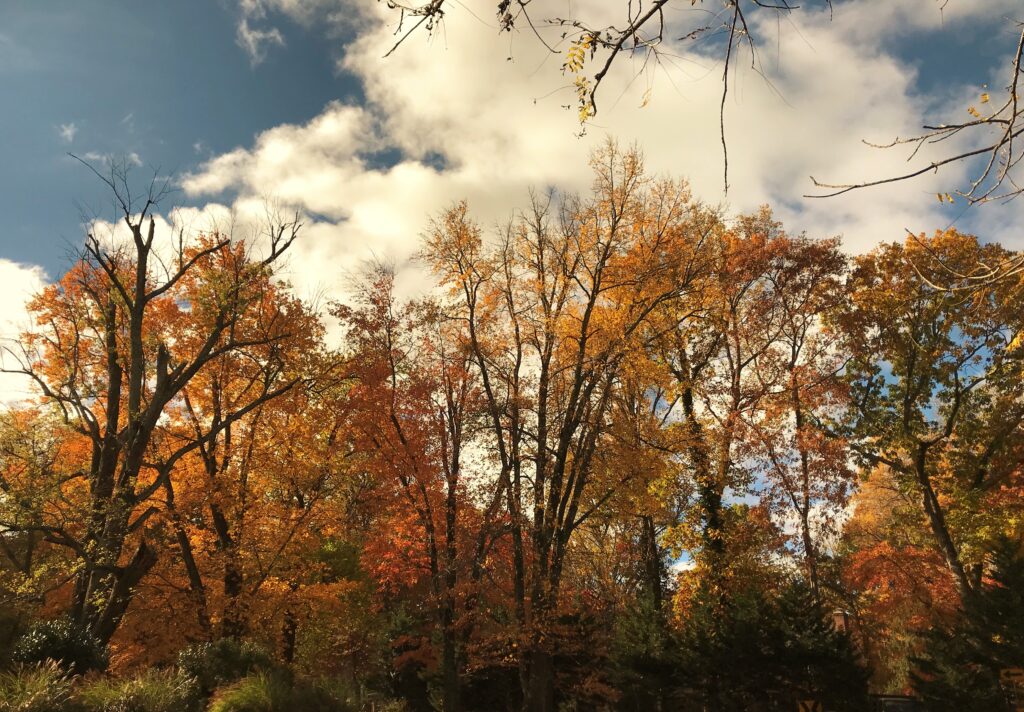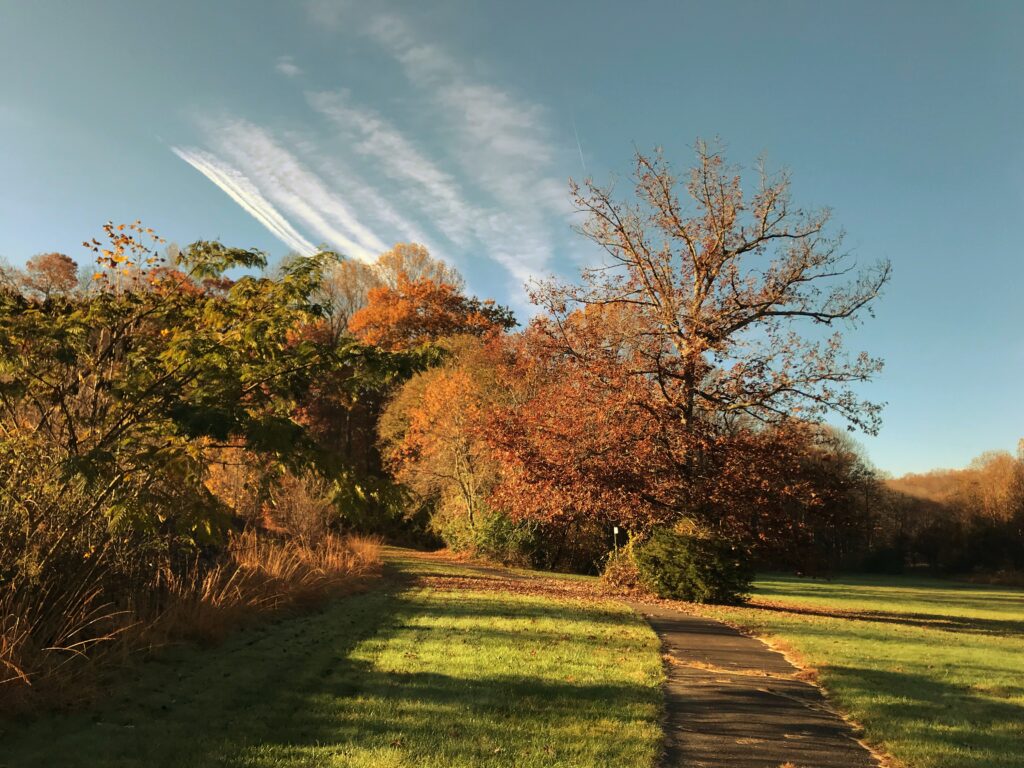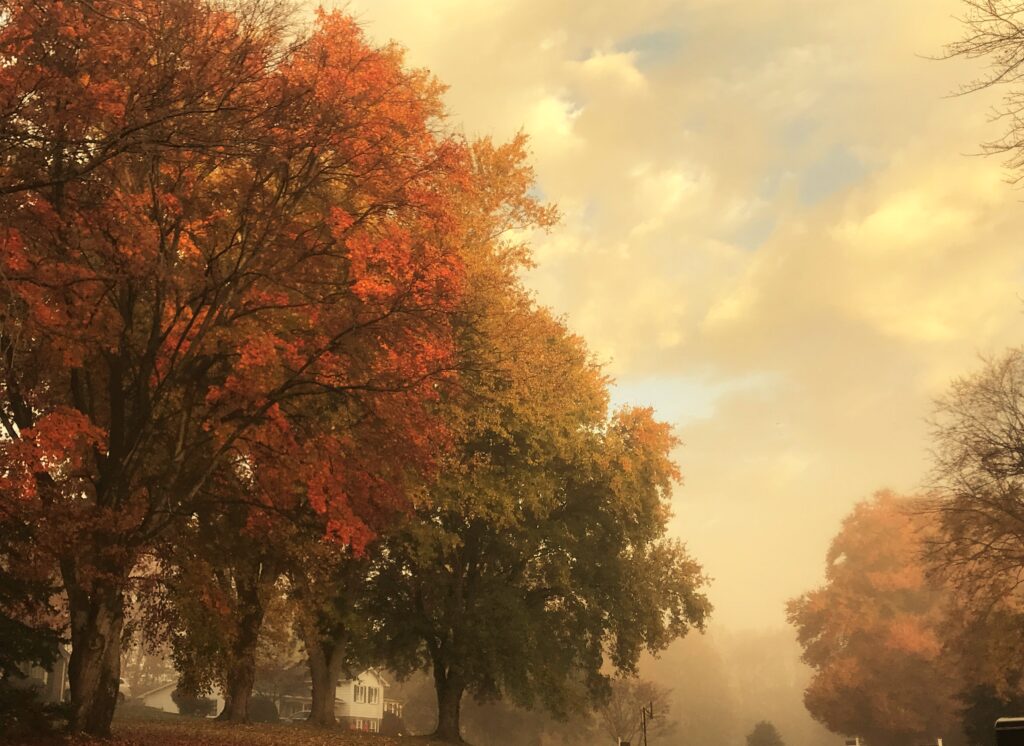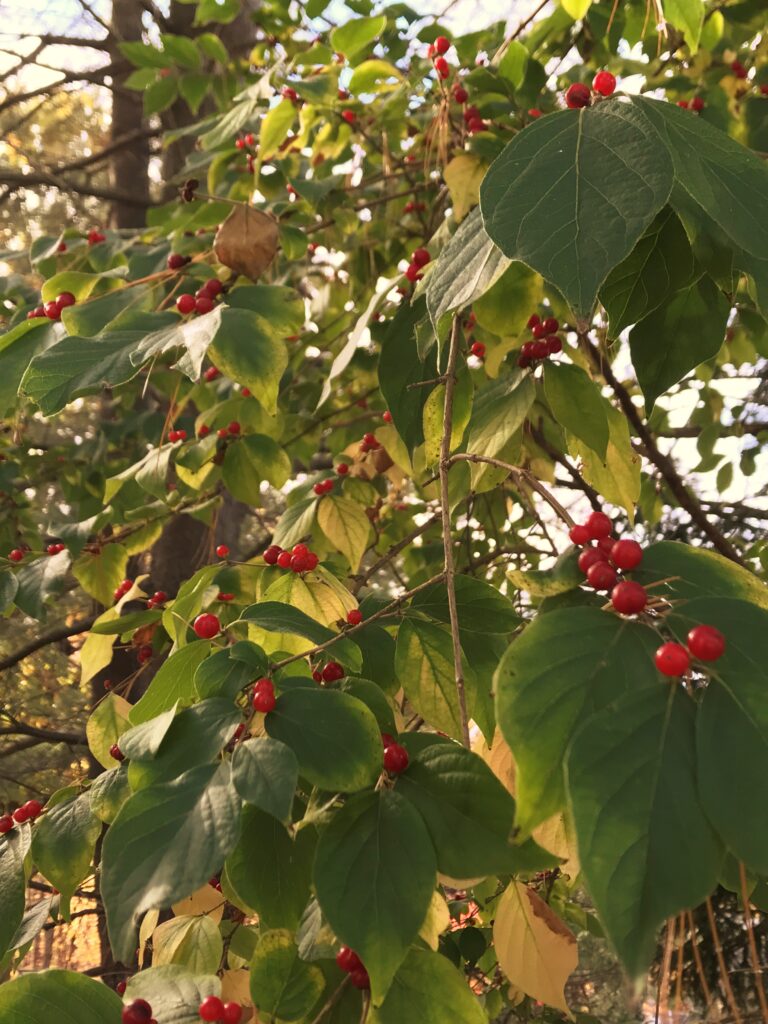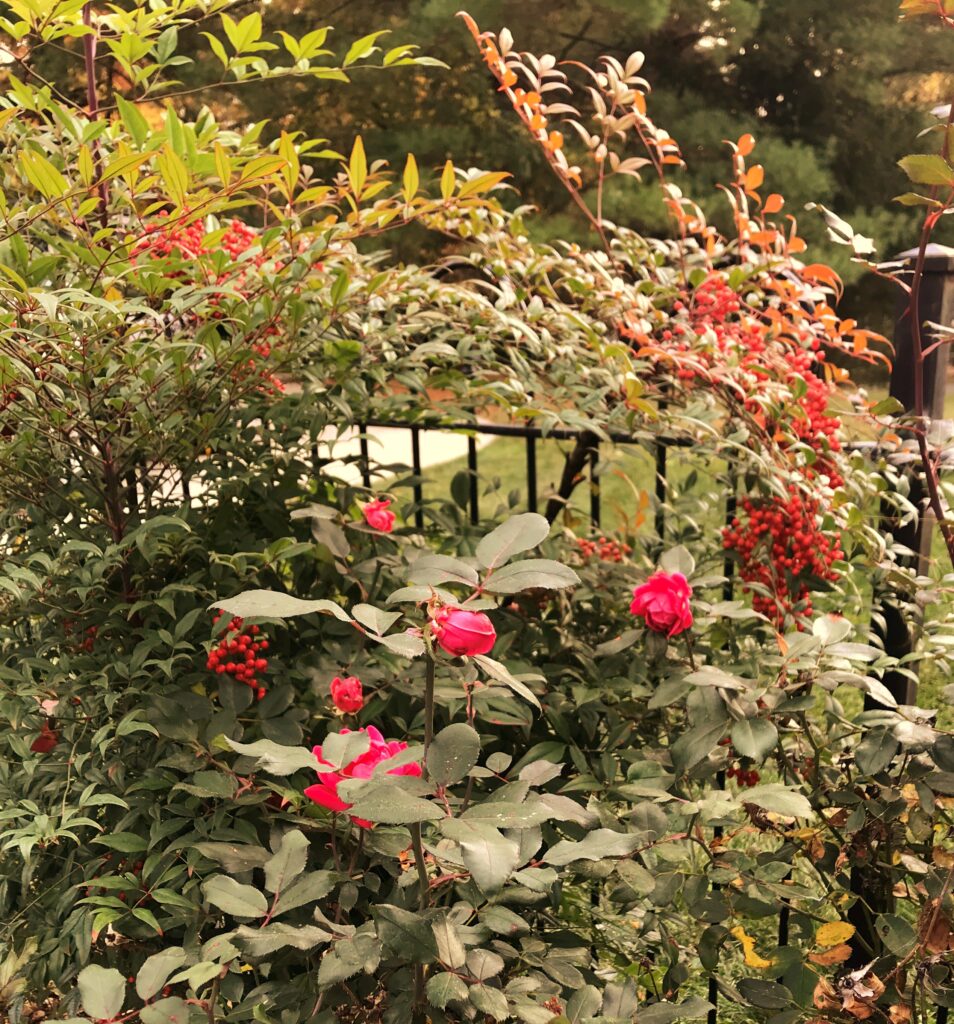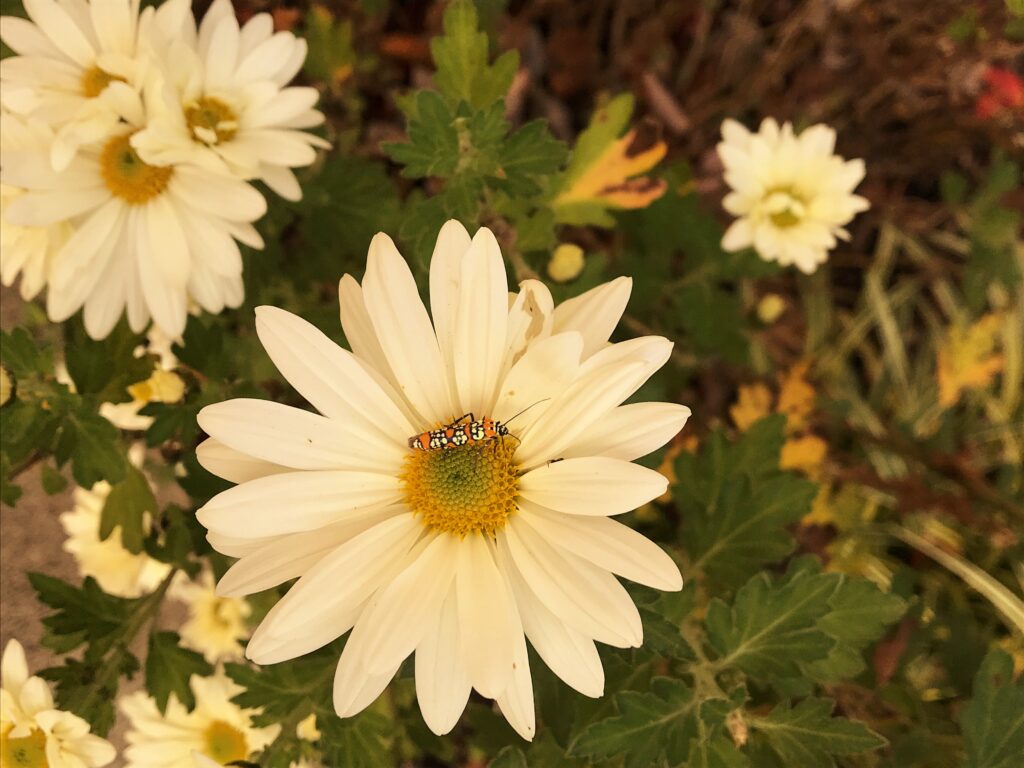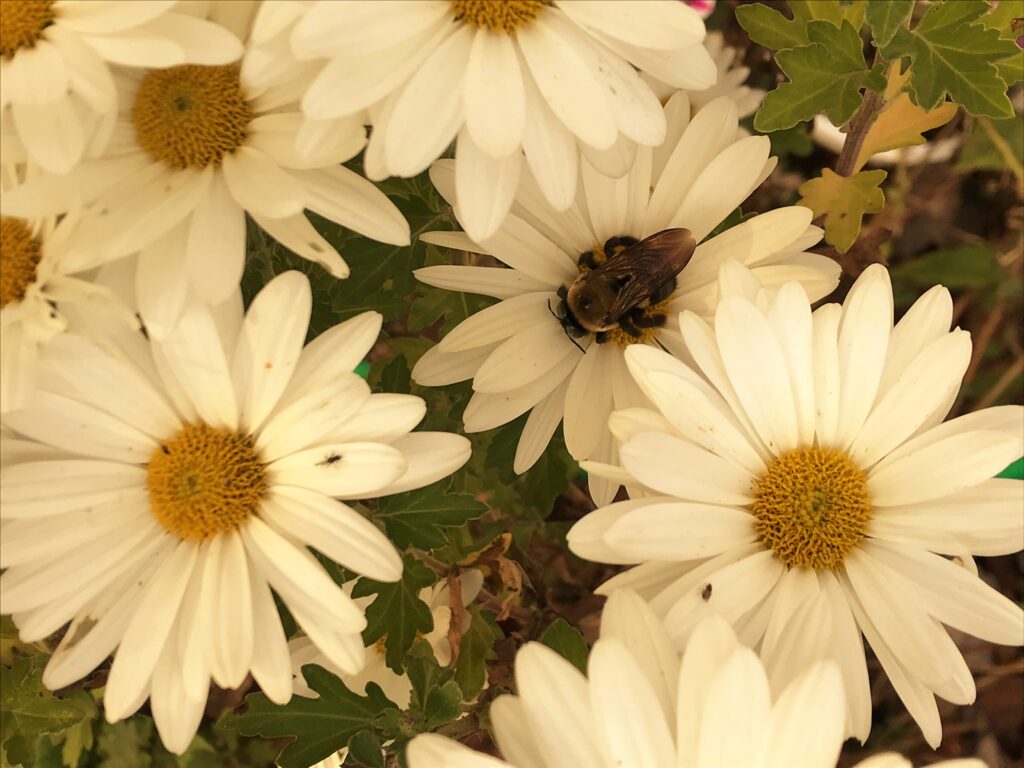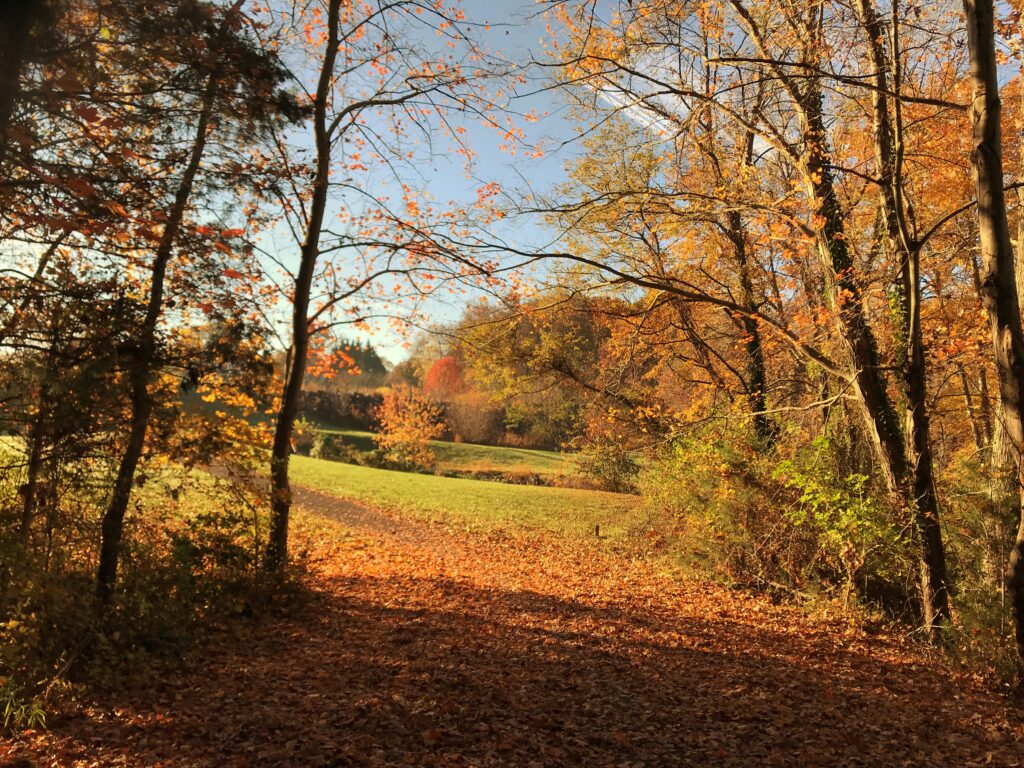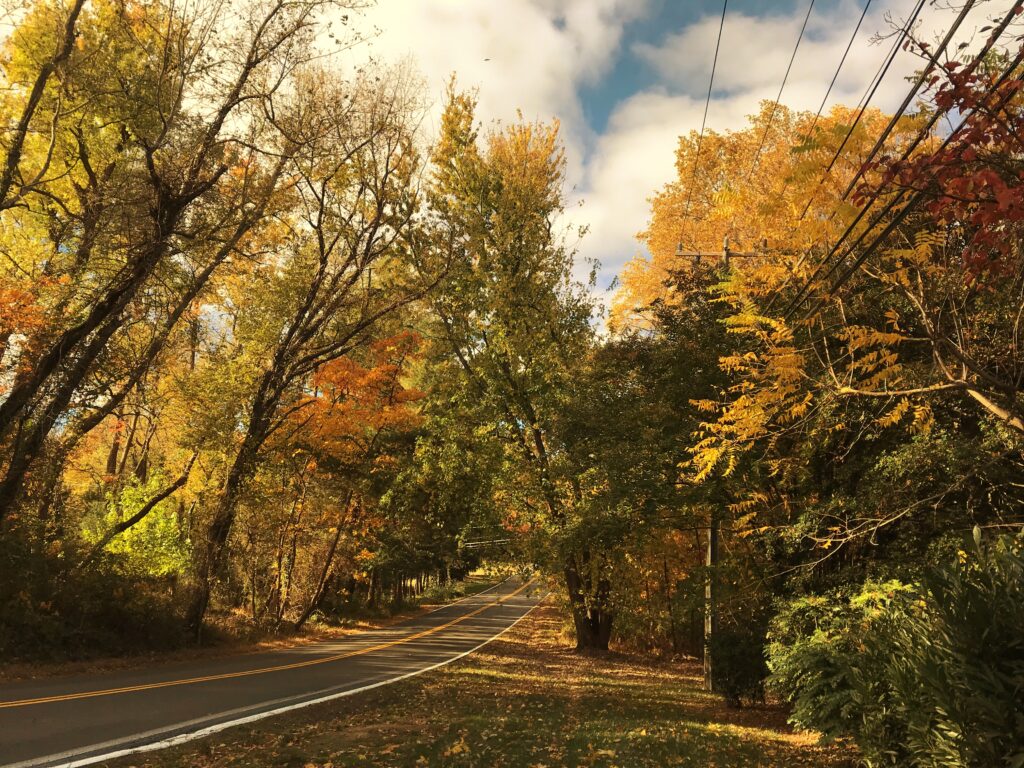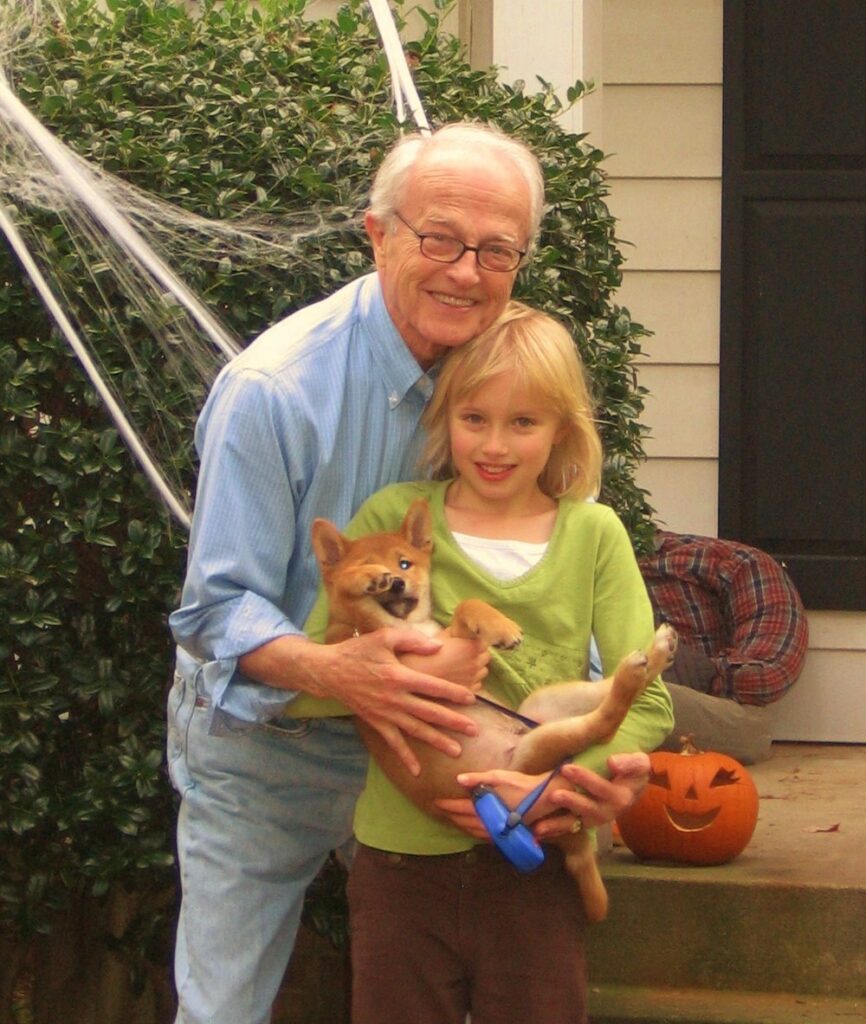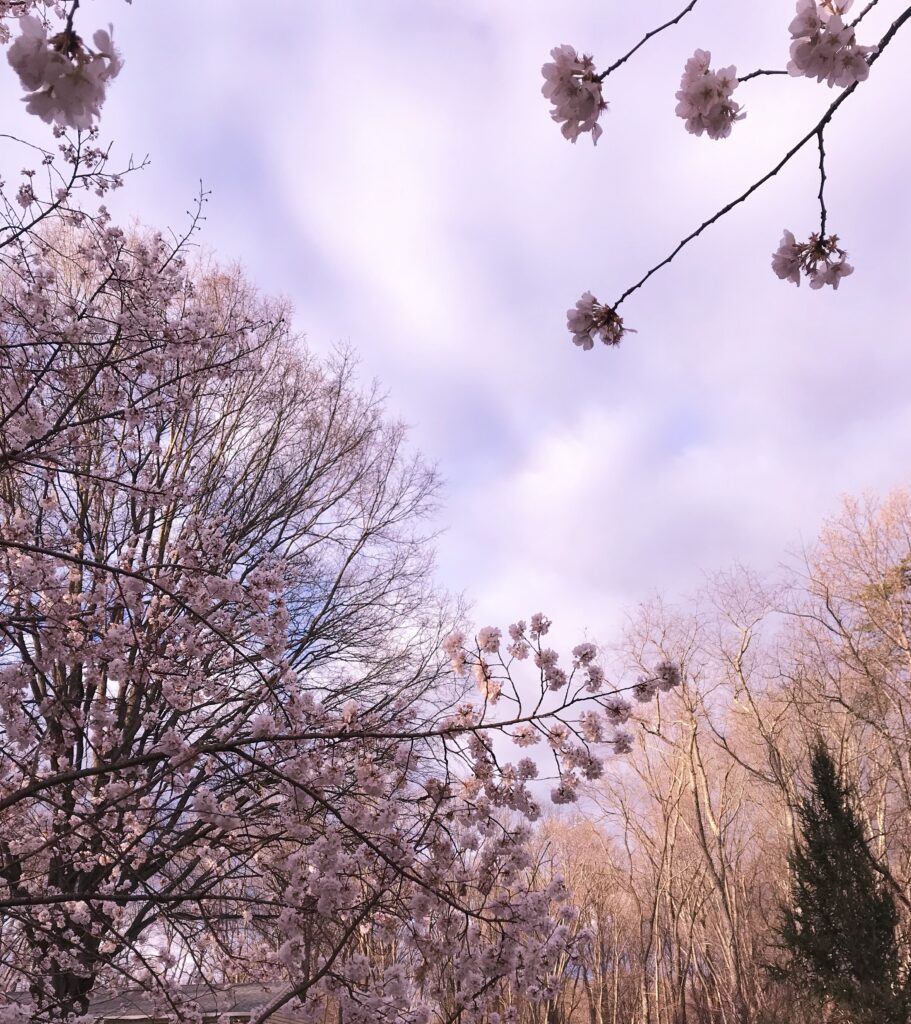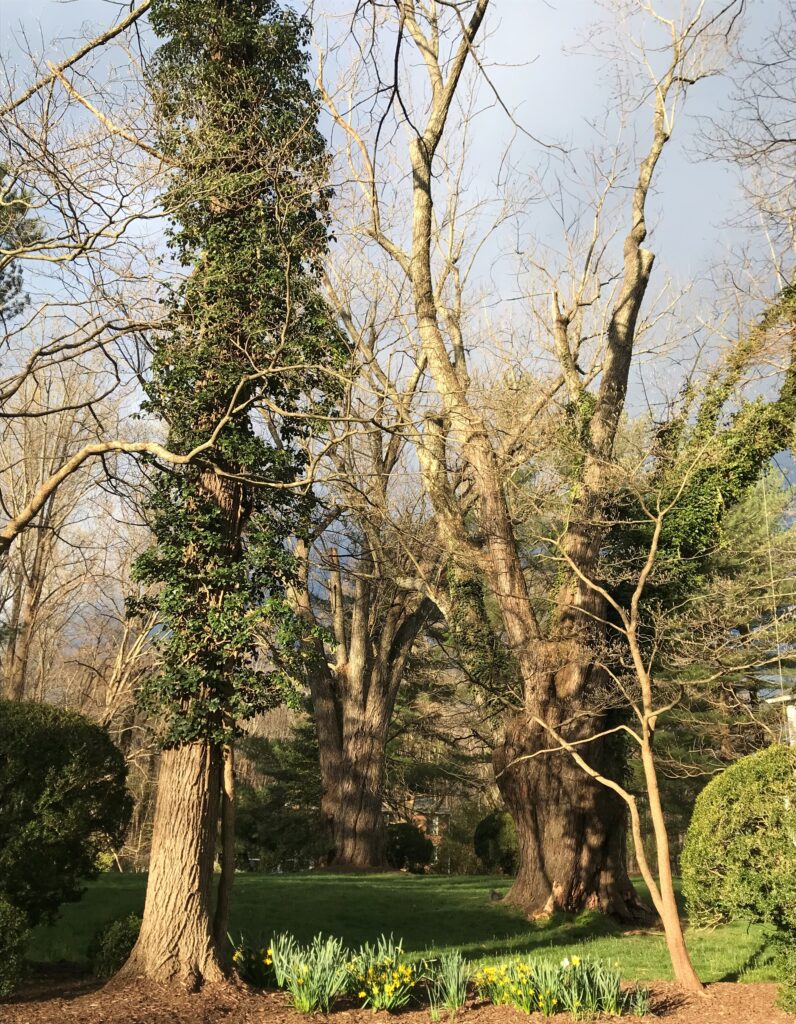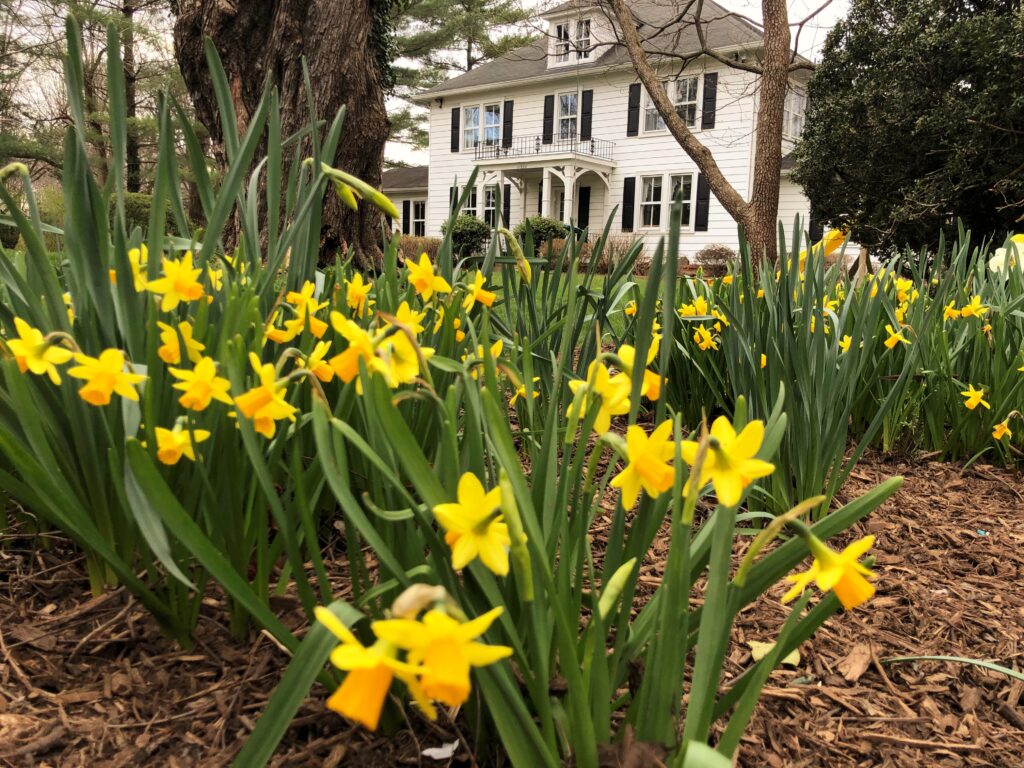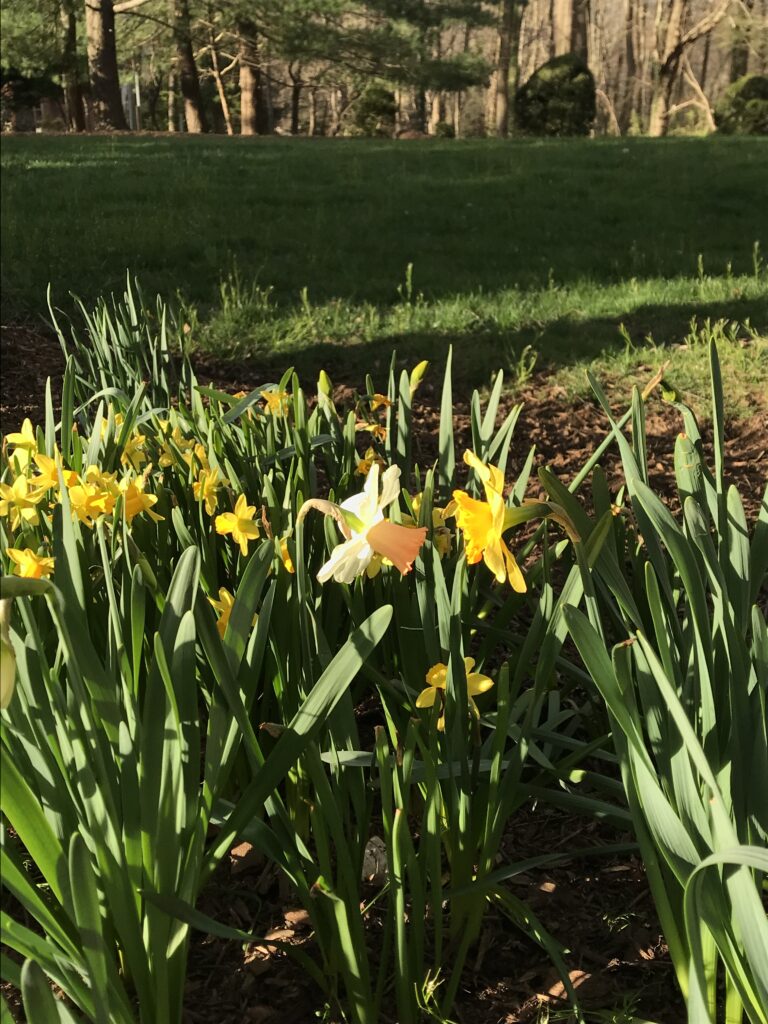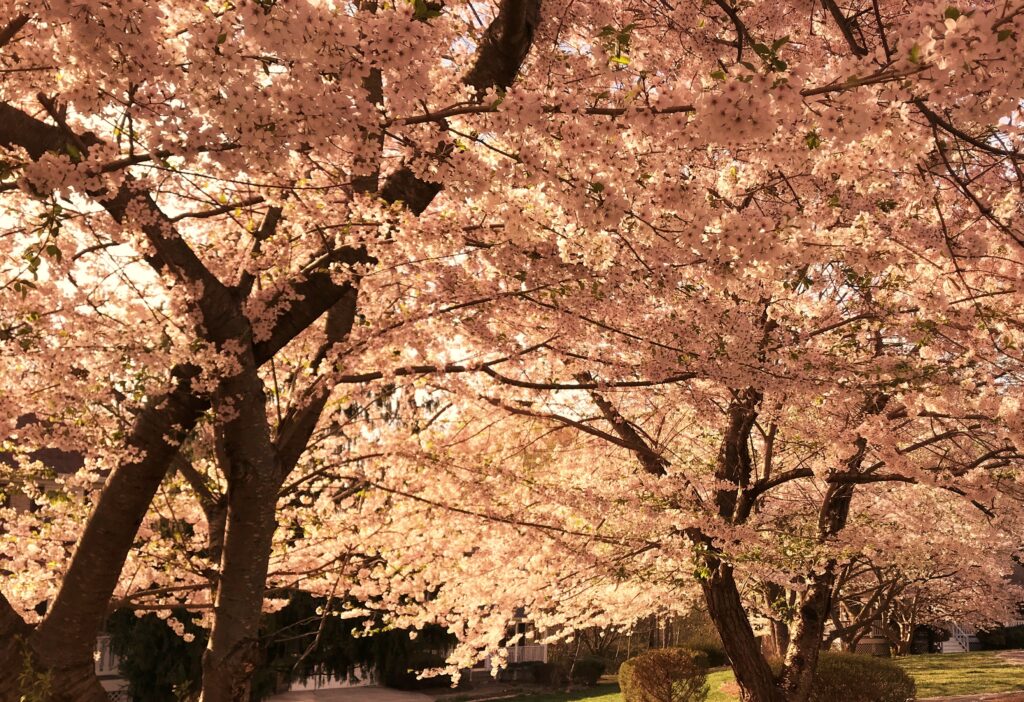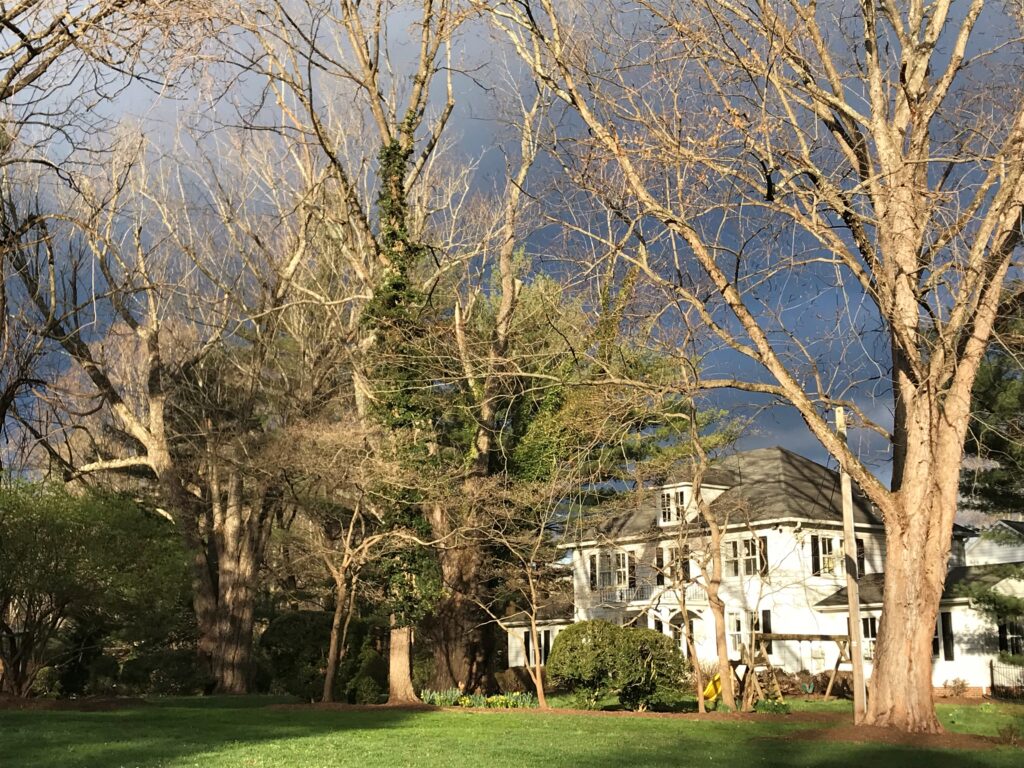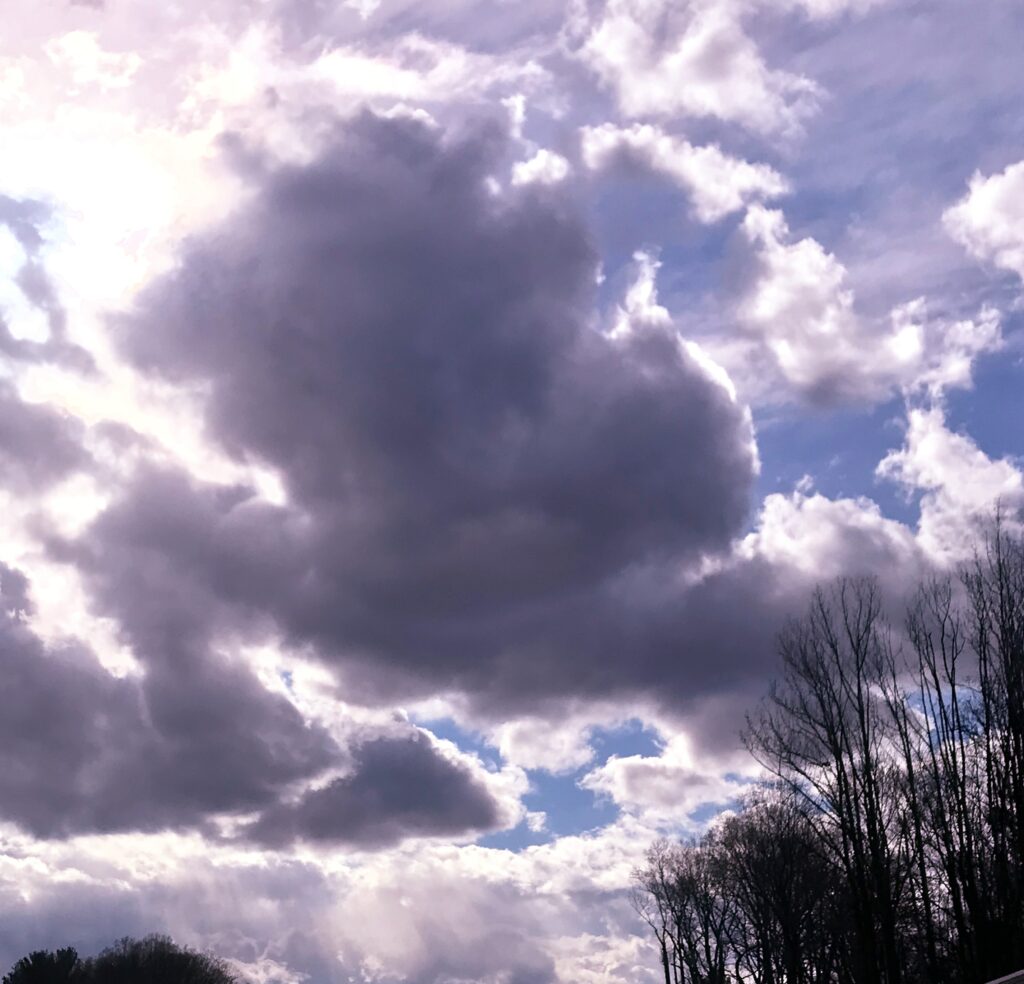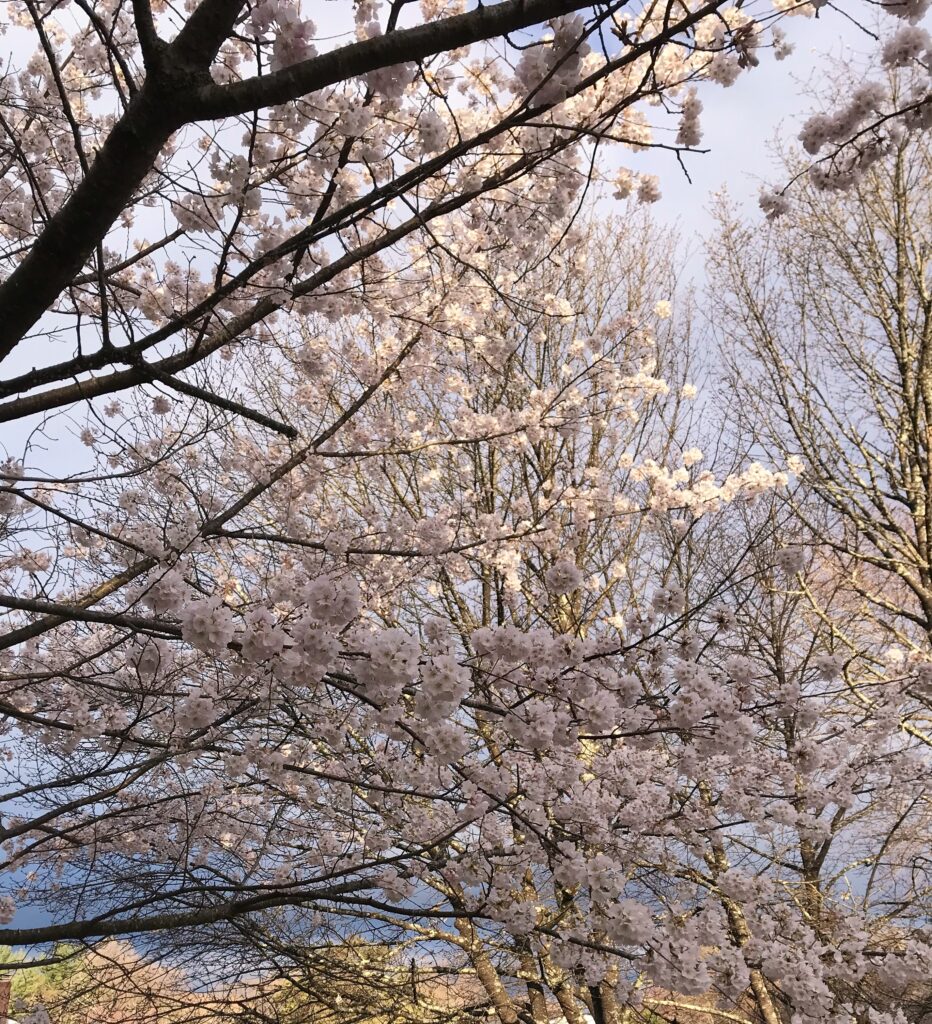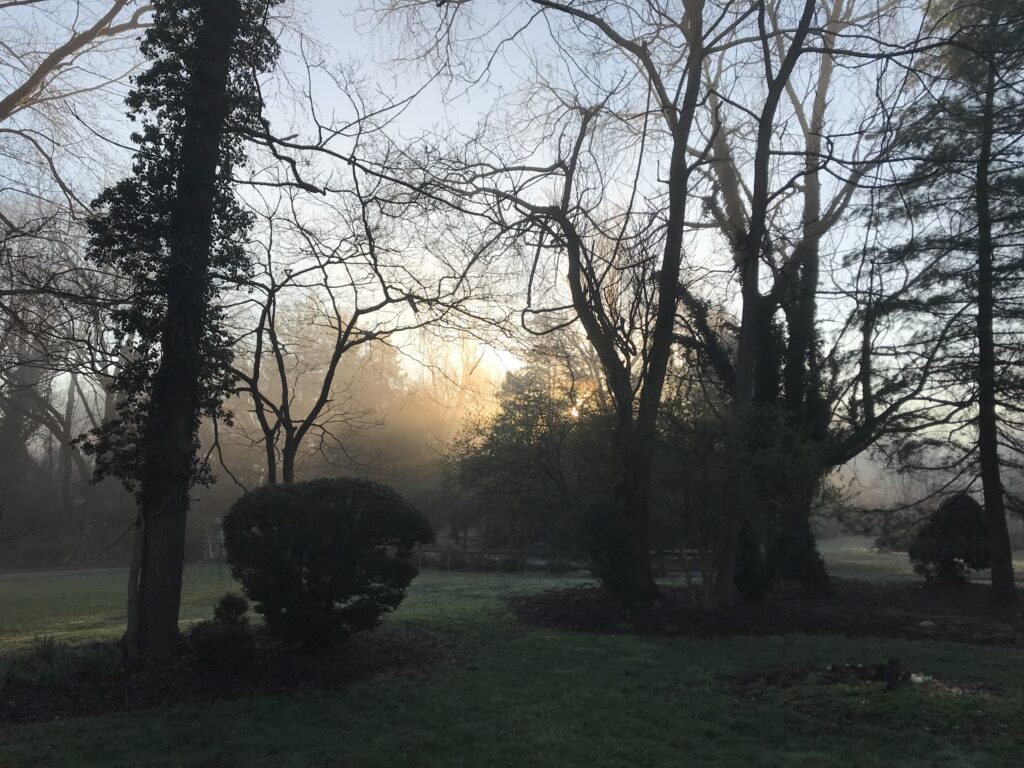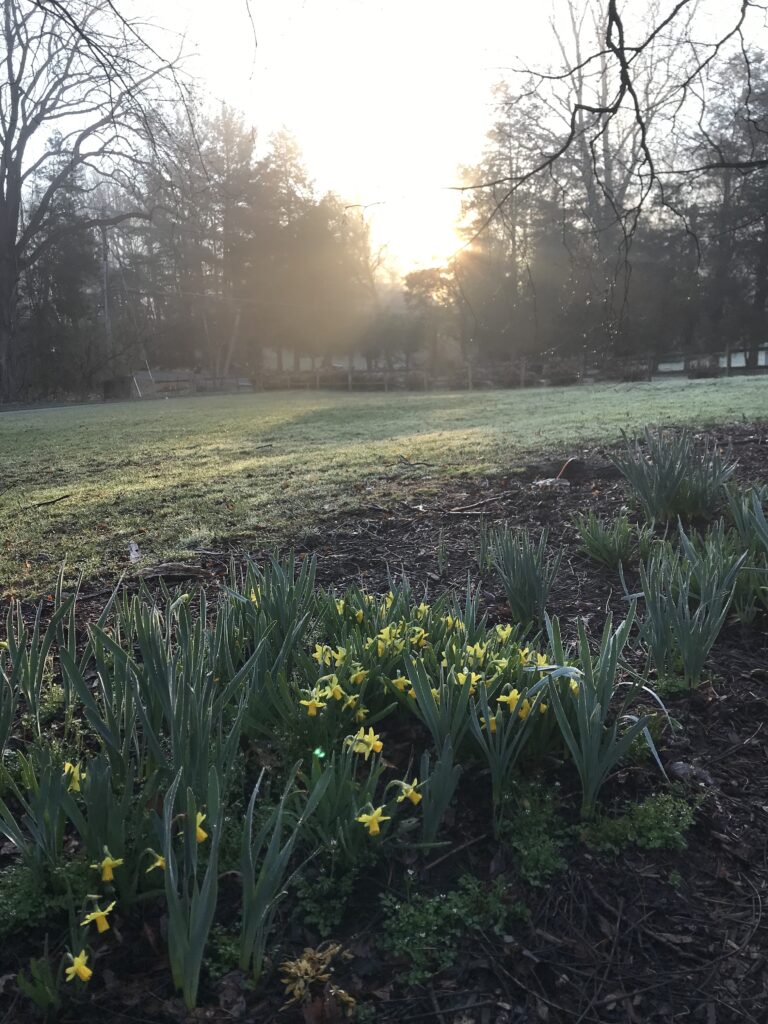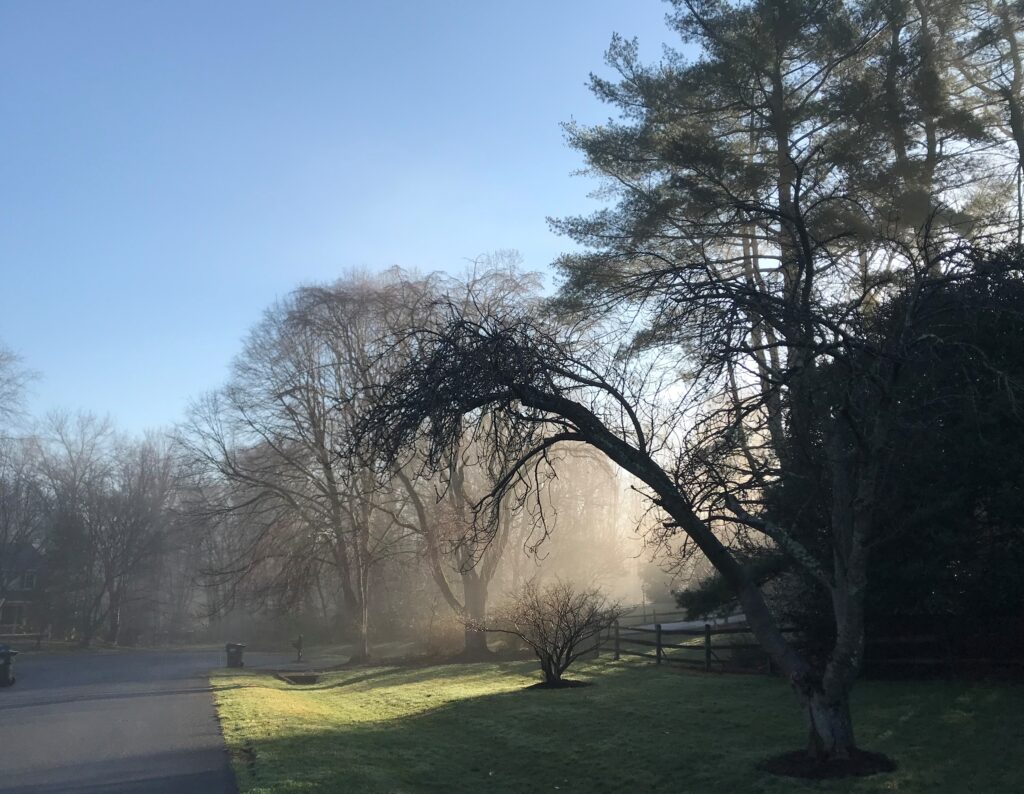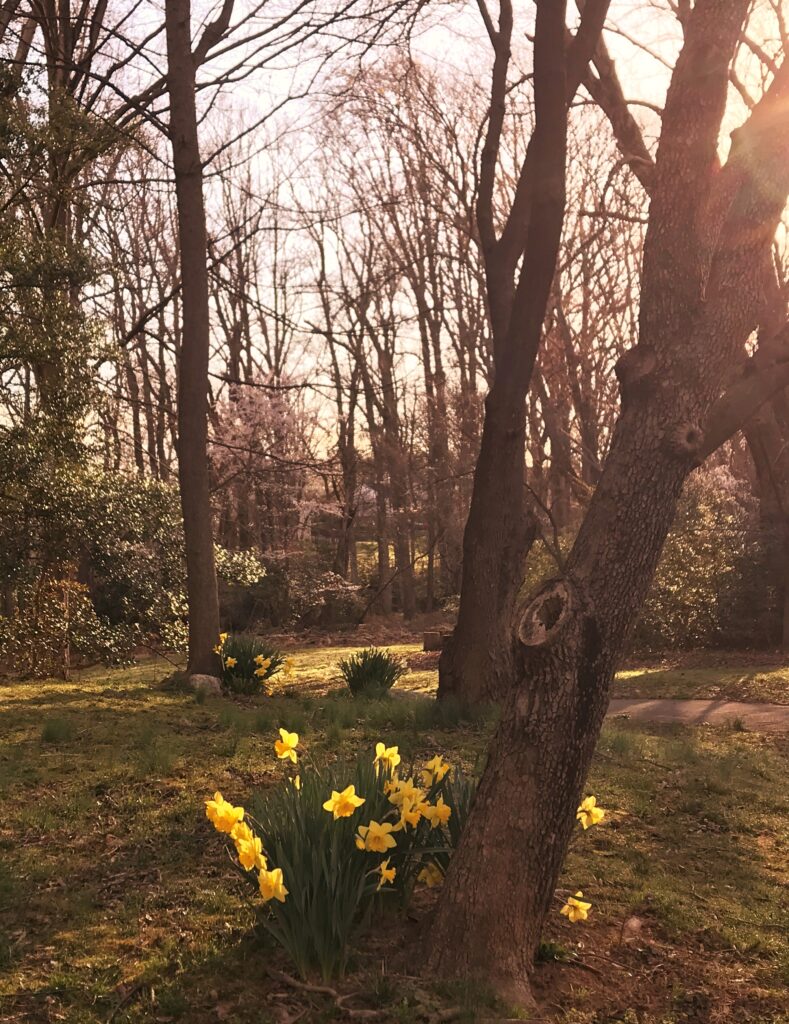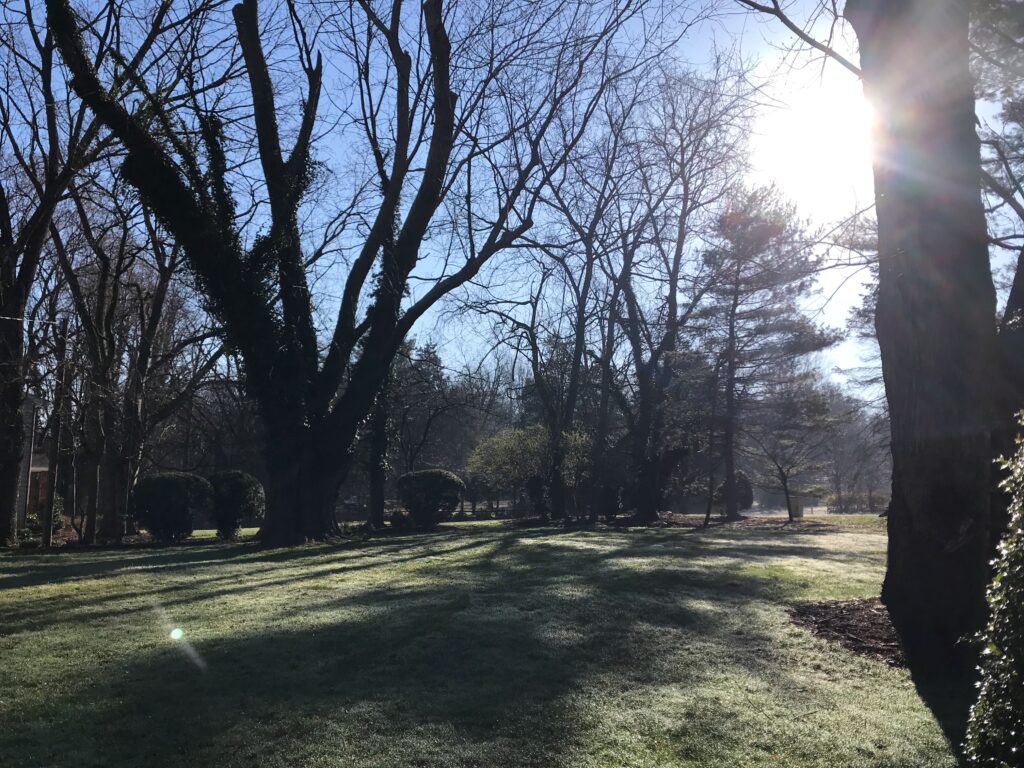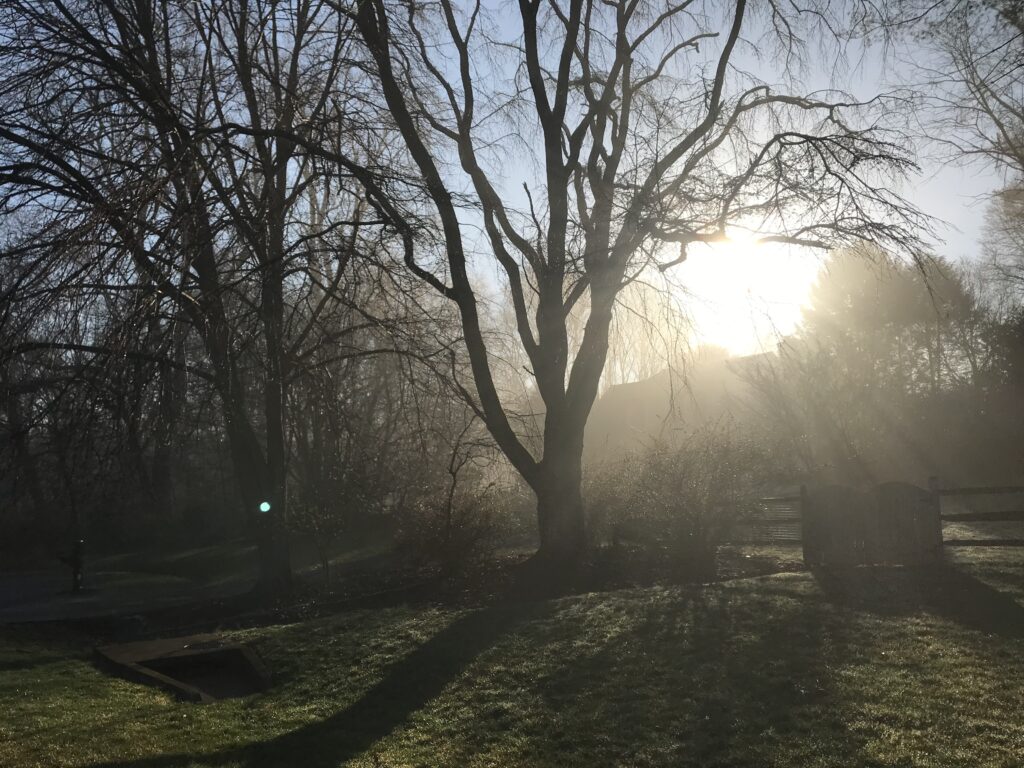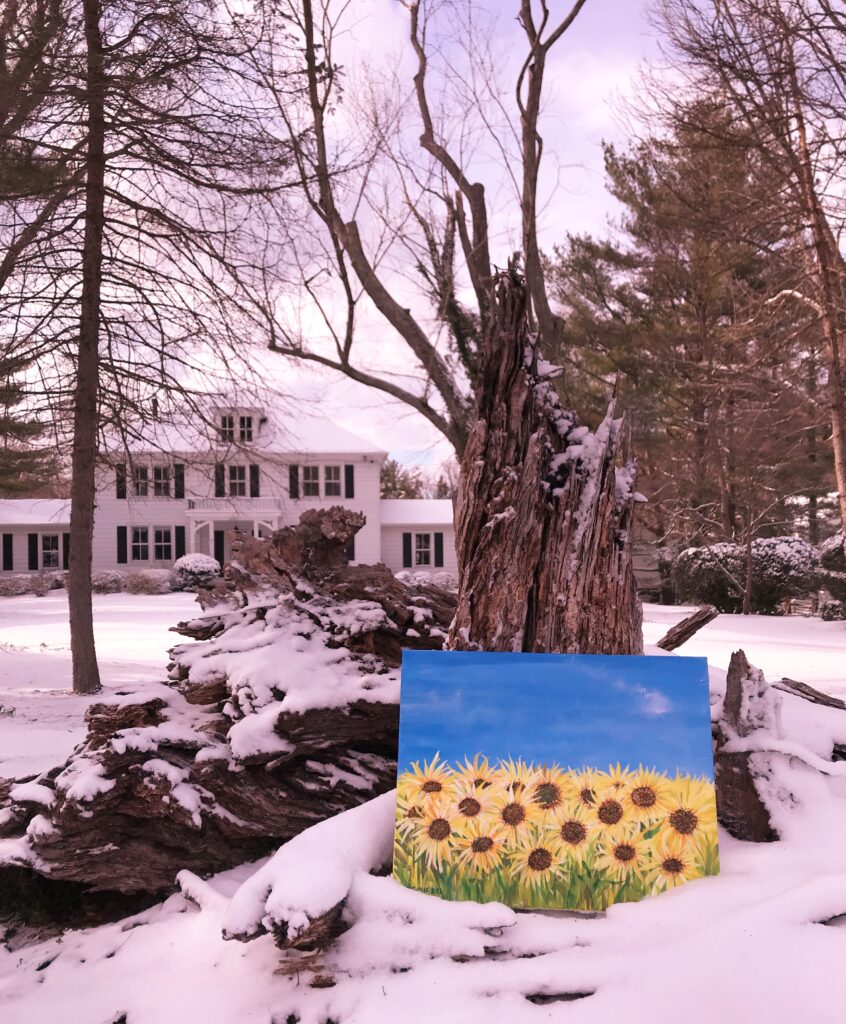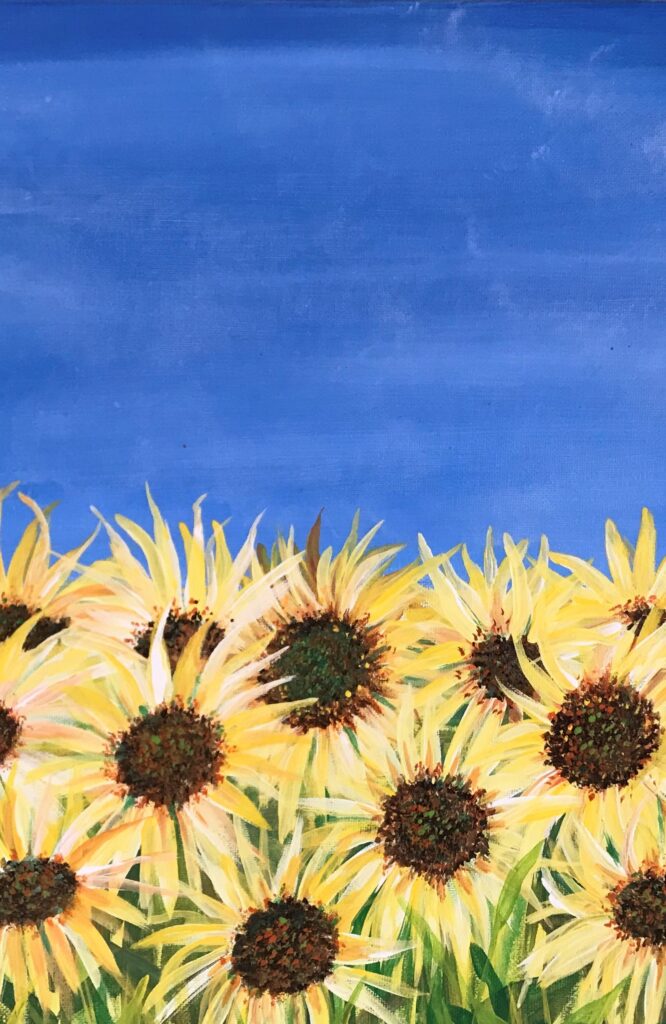It’s been a particularly beautiful October here in Northern Virginia. I’ve been hesitant to post about the loveliness of these autumn days, considering the turmoil that currently engulfs so much of the world. Two wars rage, hostages suffer, families worry and grieve, survivors dig through neighborhoods reduced to rubble, atrocities are committed, revenge is sought, God’s name is invoked with righteous fury by rival parties, not just in battle-torn areas, but also here in the U.S., where our legislature has recently seemed more intent on sabotaging government than on governing. Under these circumstances, is it being trite and insensitive to say, “But aren’t the fall colors pretty?”
They really are, though. And maybe, because of all the ugliness that churns and boils around us, it’s even more necessary to cherish and give thanks for beauty wherever we meet it. I’d find it hard to let the season pass without a tribute.
Here, then, are some images of fall in the DC suburbs.
Early morning light shines through the leaves of maples and pin oaks, setting the field aglow.
This large flamboyant maple is a local star this time of year.
Red berries stand out on the pods of an evergreen southern magnolia.
One of the few touches of bright fall color in our front yard is provided by a small sassafras tree.
The sassafras is unusual for the variation in leaf shapes found on a single tree.
Some sassafras leaves are simple ovals; others have two lobes, making for a mitten shape, and others are symmetrical, with three lobes.
A gloriously golden tree is this towering, majestic hickory, one of my favorites in the area. It makes me smile every time I drive past it.
I love the variety of color and texture in this grouping of trees.
The word “red” seems insufficient to describe these brilliant, jewel toned leaves. Vermilion? Scarlet?
Against a cloudy sky, late afternoon light gilds the maples and white pines in our side yard.
Fall occasionally gifts us with an unexpected delight. This azalea typically blooms only in the spring, and its past blossoms have been deep, solid pink. These October flowers of variegated color are an especially pleasant surprise.
Our pale pink trellis roses continue to bloom sporadically well into the fall.
The October days are dwindling fast, and Halloween approaches. May you have access to autumn beauty while it persists, and may it bring you moments of peace and joy.

